30 Zero-Carb Foods You Can Eat on Keto, According to a Nutrition Coach

Finding truly carb-free foods can feel like searching for a needle in a haystack. Kait Malthaner, a certified health and nutrition coach specialising in blood sugar control and insulin resistance (aka Health Coach Kait), cuts through the confusion as a certified health and nutrition coach specializing in blood sugar control and insulin resistance. Kait is offering genuine guidance without the misleading information that plagues many nutrition resources. Discover her list of zero-carb and low-carb foods that will transform your keto or low-carb lifestyle today.
Beef
As Kait explains in her video, "All types of meat contain zero carbohydrates." Beef tops the list as an excellent protein source with absolutely no carbs. According to Mayo Clinic, beef provides essential nutrients like iron, zinc, and vitamin B12, crucial for energy production and immune function. Kait warns to "watch out for anything that has been pre-marinated or comes with any sauce. These are usually filled with sugar and will not be zero carb." Choose grass-fed options when possible for higher omega-3 content and better fatty acid profiles.
RELATED: This Is Exactly How to Lose Body Fat This Year
Chicken
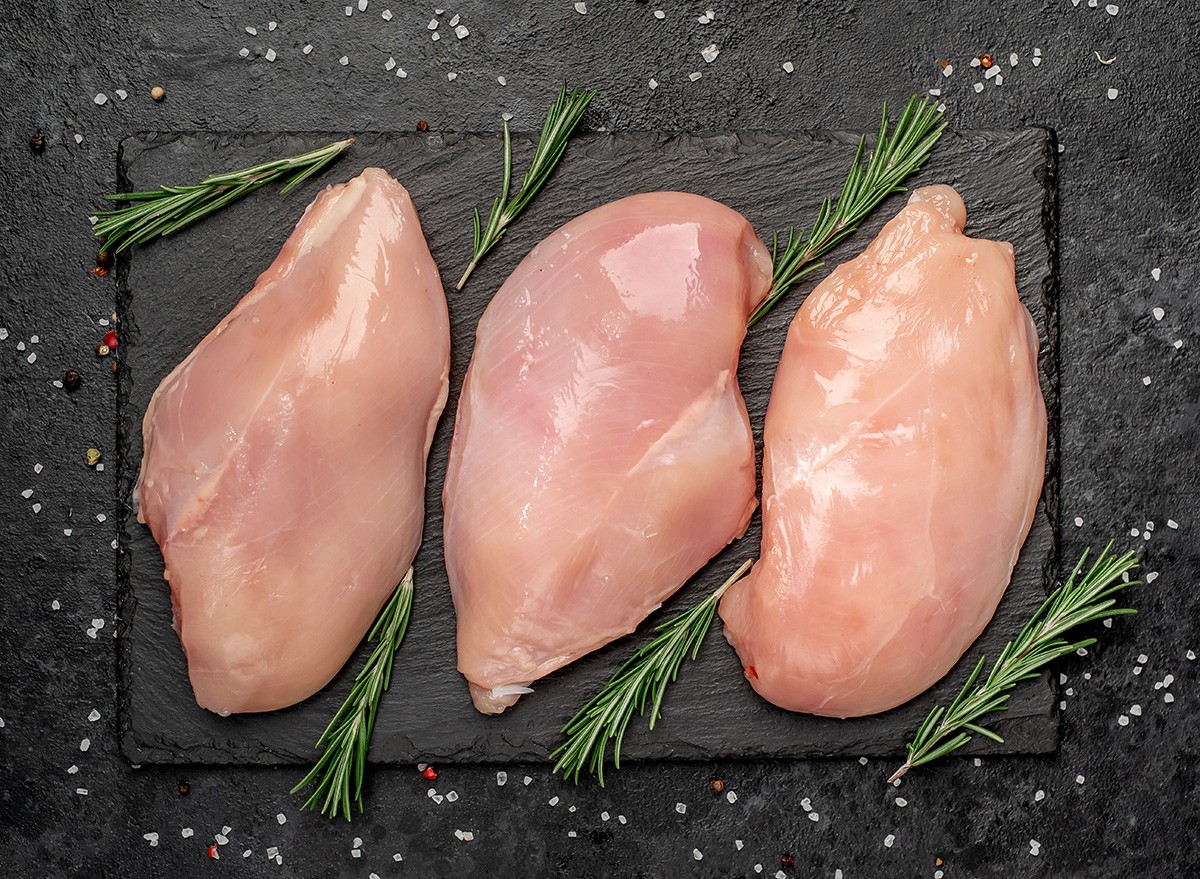
Chicken makes Kait's list of meats that "contain zero carbohydrates." This versatile protein source is not only carb-free but also lower in saturated fat than red meat. The Harvard T.H. Chan School of Public Health notes that chicken provides essential amino acids needed for muscle repair and growth. From roasting to grilling to air-frying, chicken adapts to countless preparation methods while keeping your carb count at zero, making it a staple for any low-carb meal plan.
Pork
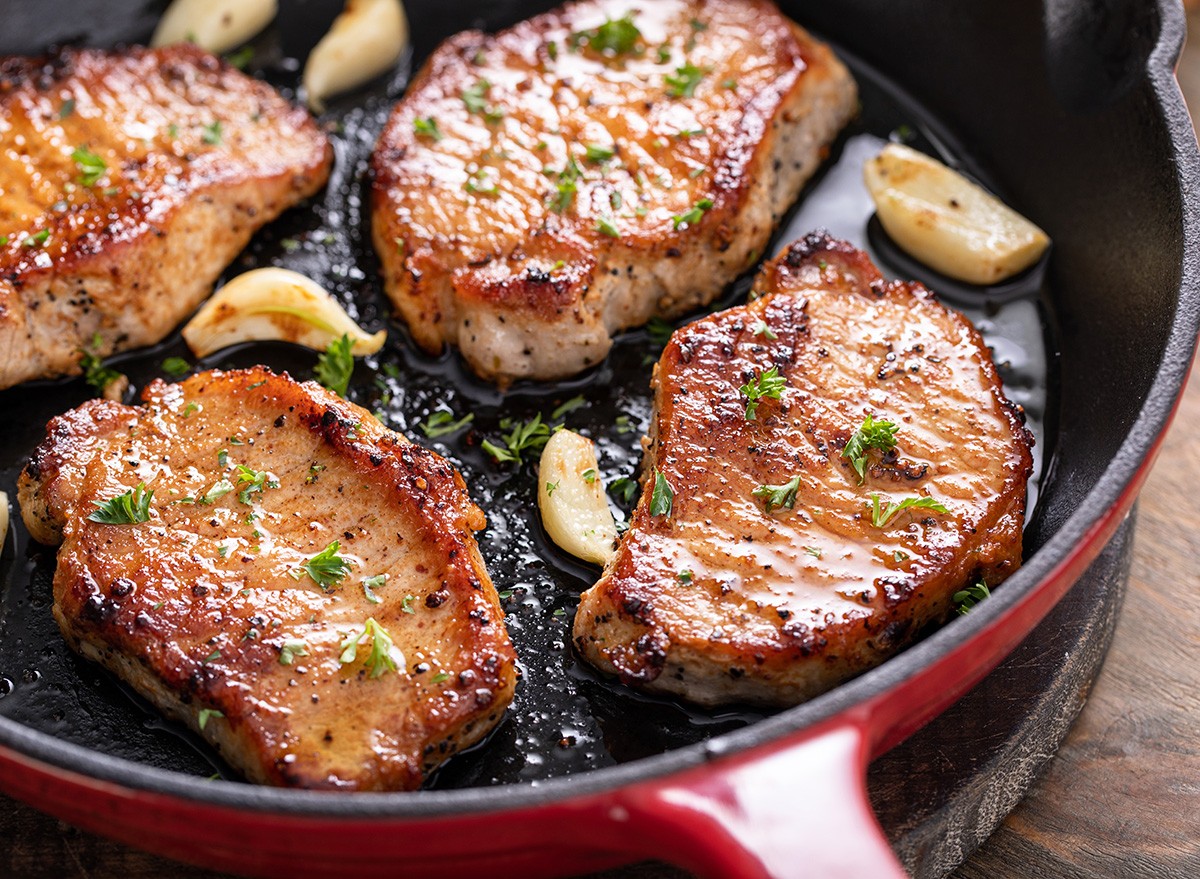
Pork is another meat that Kait confirms "contain(s) zero carbohydrates." This versatile protein provides thiamine (vitamin B1) at levels higher than most other foods, according to the National Institutes of Health. Pork tenderloin is particularly lean, while fattier cuts like bacon can add flavor to low-carb meals. However, Kait cautions, "with bacon, more often than not, there is added sugar as a preservative. Now if there is less than one gram, that's not really worth fussing over, but some brands will have more added, so make sure to check your labels."
Turkey

Turkey joins Kait's lineup of meats that "contain zero carbohydrates." Beyond being carb-free, turkey is notably high in protein while being lower in fat than many other meats. The Cleveland Clinic highlights turkey as an excellent source of selenium, a mineral that supports thyroid function and acts as an antioxidant in the body. Both white and dark meat contain zero carbs, though dark meat offers more iron and zinc, making turkey a nutritionally valuable addition to your zero-carb food arsenal.
Lamb
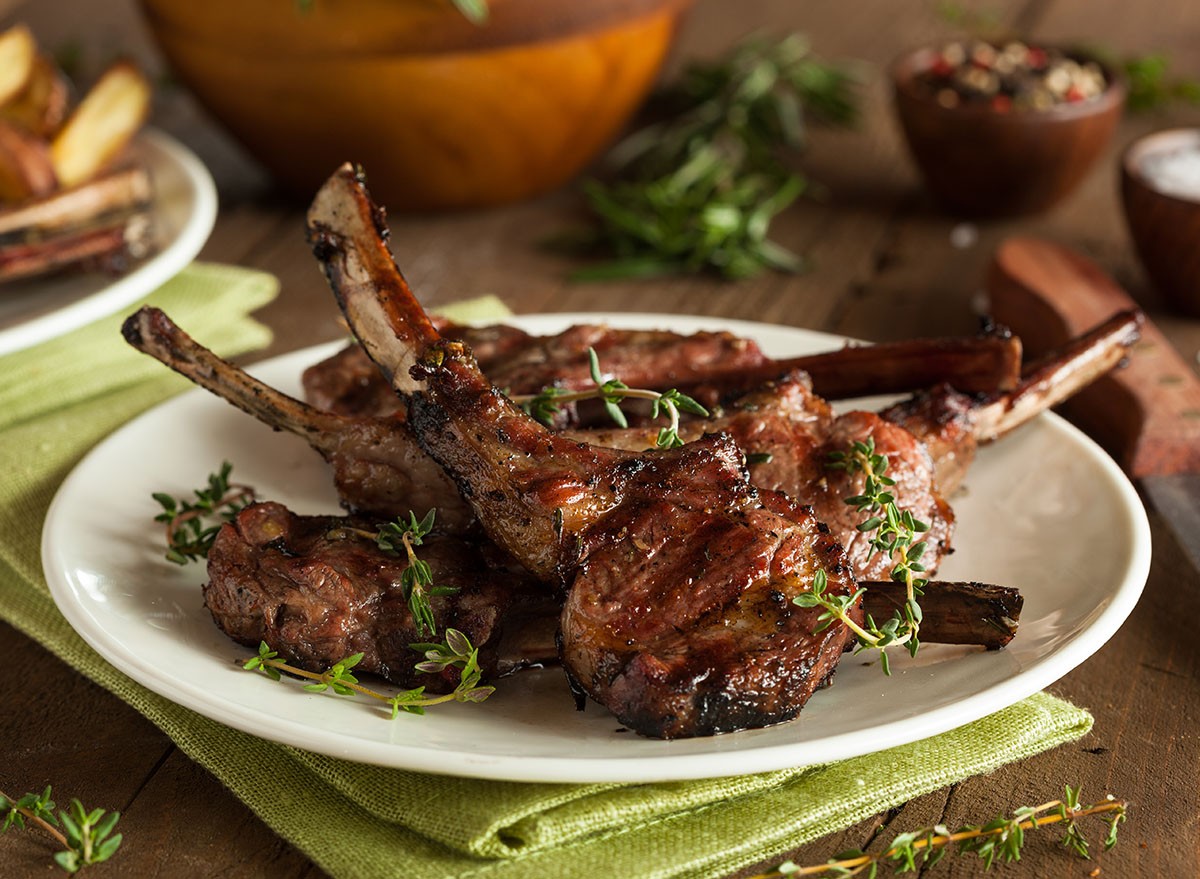
Kait includes lamb on her list of meats that "contain zero carbohydrates." This flavorful red meat not only provides protein but also delivers a significant amount of conjugated linoleic acid (CLA), which may have anti-inflammatory properties according to research published by the National Institutes of Health. Lamb also contains taurine, an amino acid that supports cardiovascular health and neurological function. For optimal nutritional value, select grass-fed lamb when possible, as it typically contains higher levels of beneficial omega-3 fatty acids.
Bison
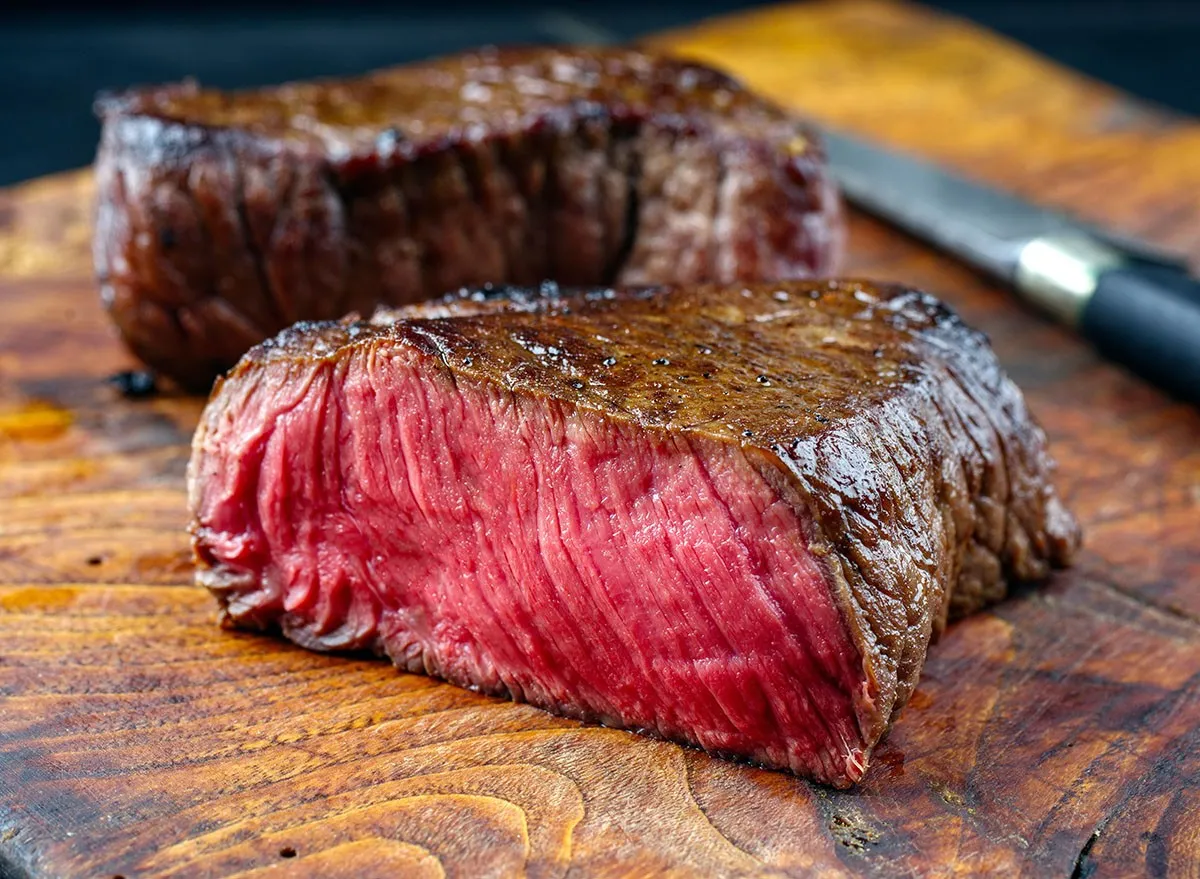
Bison makes Kait's list as one of the meats that "contain zero carbohydrates." This leaner alternative to beef provides protein with less fat and fewer calories. According to the USDA, bison meat contains higher levels of certain nutrients compared to conventional beef, including more iron and some B vitamins. This game meat offers a rich, slightly sweet flavor while keeping your carb count at absolute zero, making it an excellent choice for those looking to diversify their protein sources on a ketogenic diet.
Duck
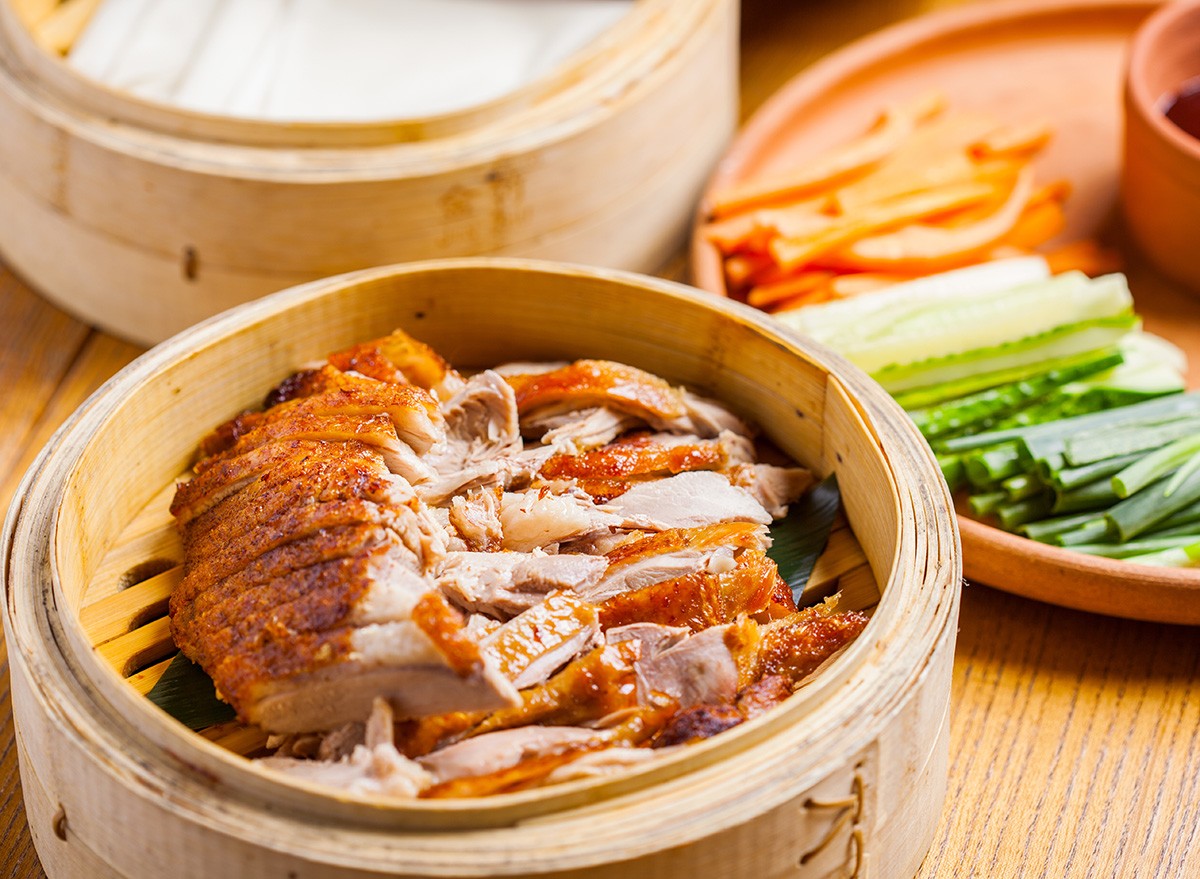
Duck appears on Kait's list of meats that "contain zero carbohydrates." This poultry option is richer in flavor than chicken while remaining completely carb-free. The Cleveland Clinic notes that duck provides more iron than chicken or turkey, supporting healthy oxygen transport throughout the body. Though higher in fat than some poultry options, this makes duck particularly suitable for keto diets where healthy fats are encouraged. The skin can be rendered to create duck fat, which Kait also lists as a zero-carb cooking fat.
RELATED: 8 High-Protein Foods with Nearly Zero Calories That Melt Fat
Salmon
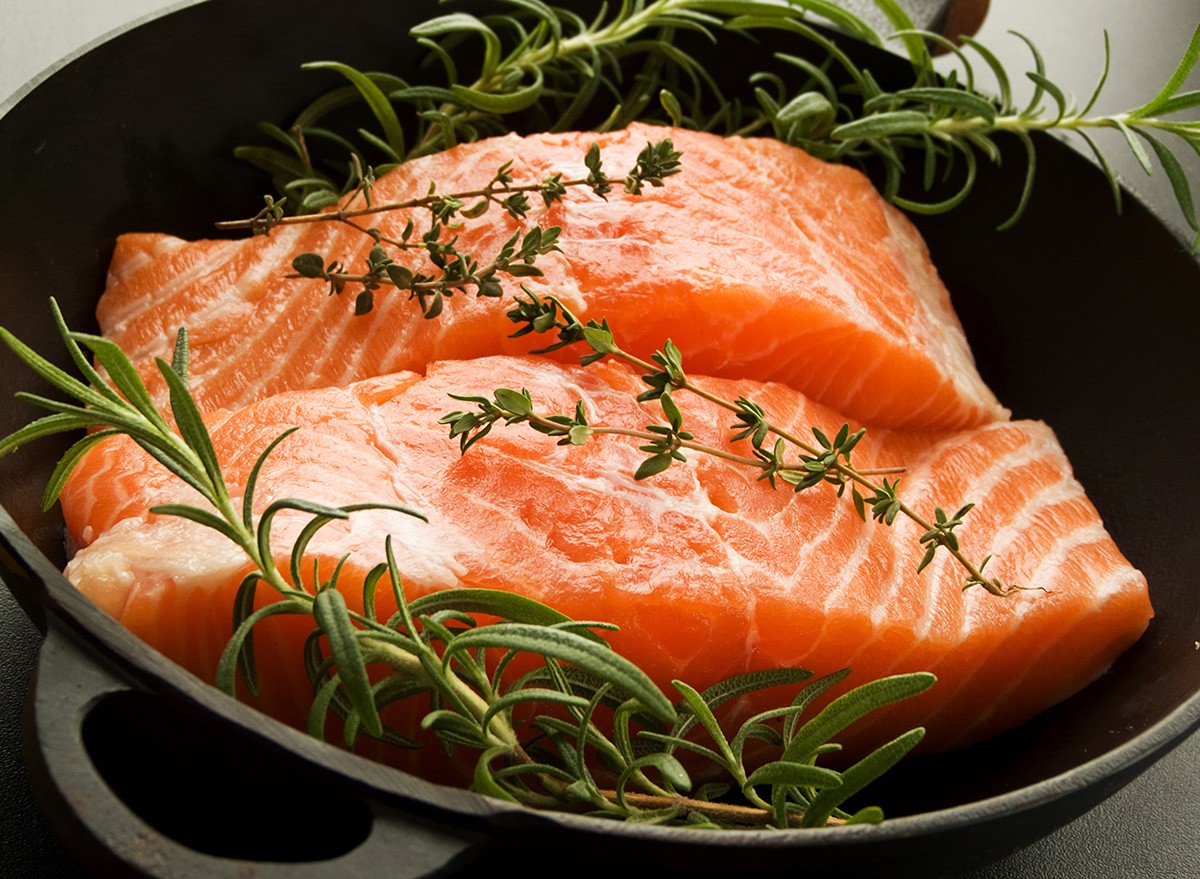
Moving to seafood, Kait confirms that "Salmon, sardines, mackerel, tuna, shrimp, crab, lobster, cod, trout, bass, anchovies, and herring…all contain zero carbohydrates." Salmon stands out for its exceptional omega-3 fatty acid content. Harvard Medical School emphasizes that these fatty acids support heart health by reducing inflammation and lowering triglycerides. Wild-caught salmon also provides vitamin D, a nutrient many Americans lack. This flavorful fish delivers protein and healthy fats without adding a single carb to your daily count.
Sardines
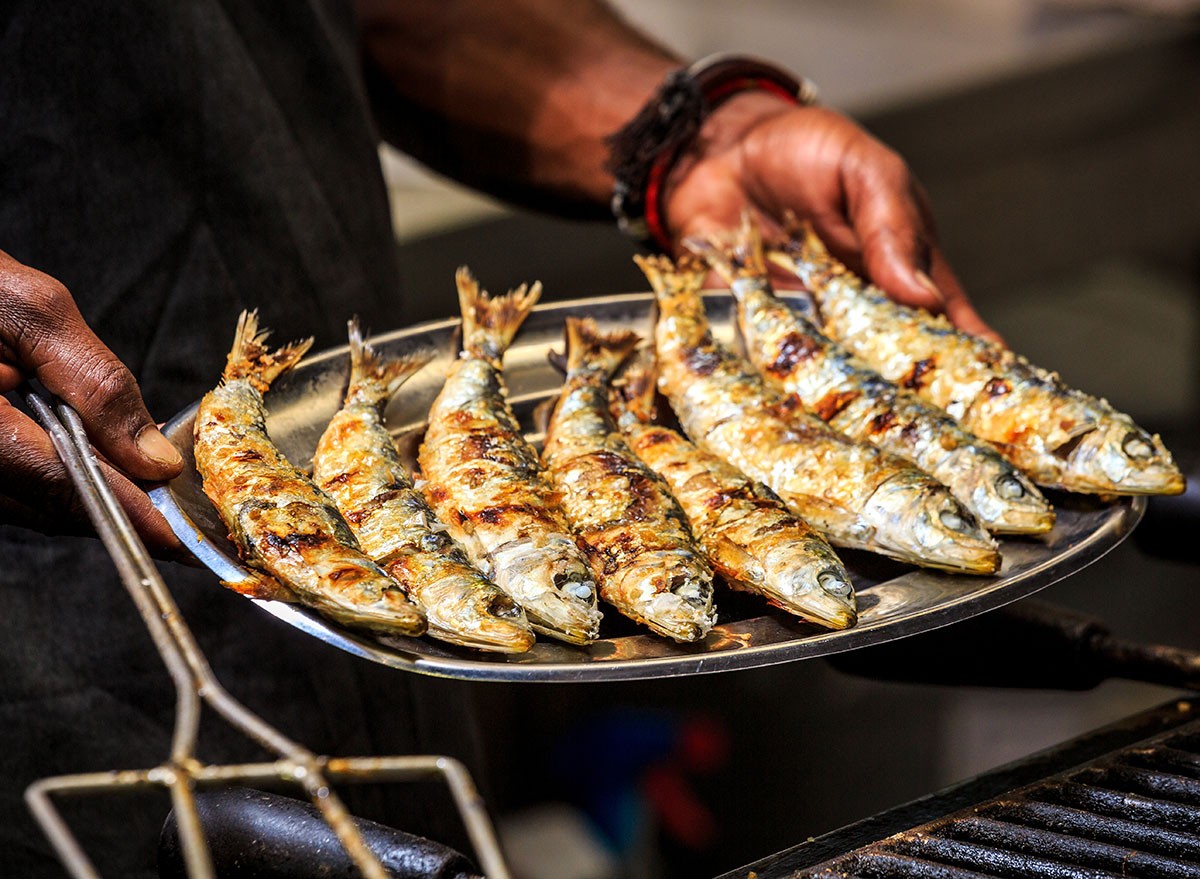
Kait includes sardines in her list of seafood that "all contain zero carbohydrates." These small fish pack a nutritional punch far beyond their size. The Harvard T.H. Chan School of Public Health notes that sardines are one of the best sources of calcium when consumed with bones, providing more than dairy products without the carbs. They're also rich in vitamin B12, which supports nervous system function and energy production. As a sustainable seafood choice that requires no refrigeration when canned, sardines offer convenience and nutrition without carbs.
Mackerel
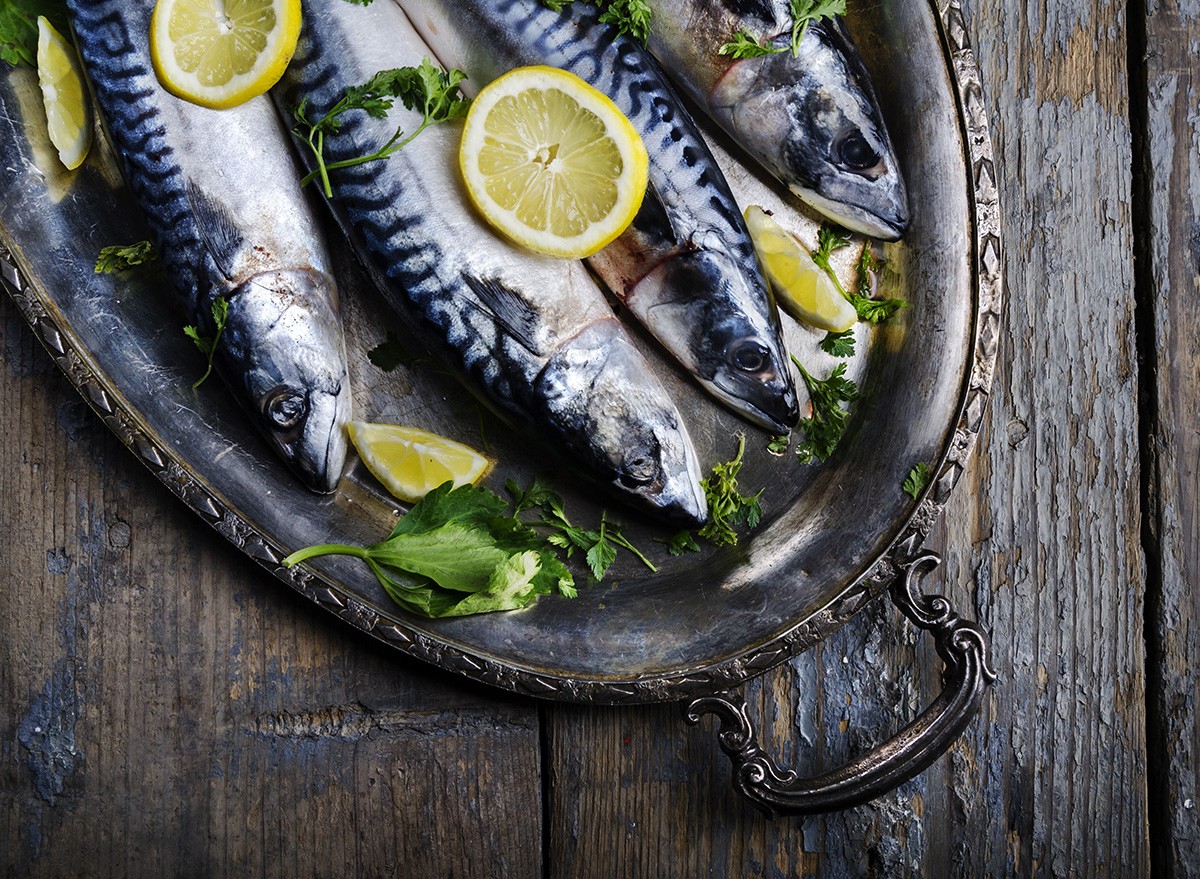
Mackerel makes Kait's list of seafood options that "all contain zero carbohydrates." This fatty fish provides one of the highest concentrations of omega-3 fatty acids available, according to the National Institutes of Health. Mackerel also delivers vitamin D, B12, and selenium – all crucial nutrients that many people don't get enough of. The American Heart Association recommends fatty fish like mackerel for heart health, making it a smart choice for those following both heart-healthy and ketogenic dietary patterns.
Tuna
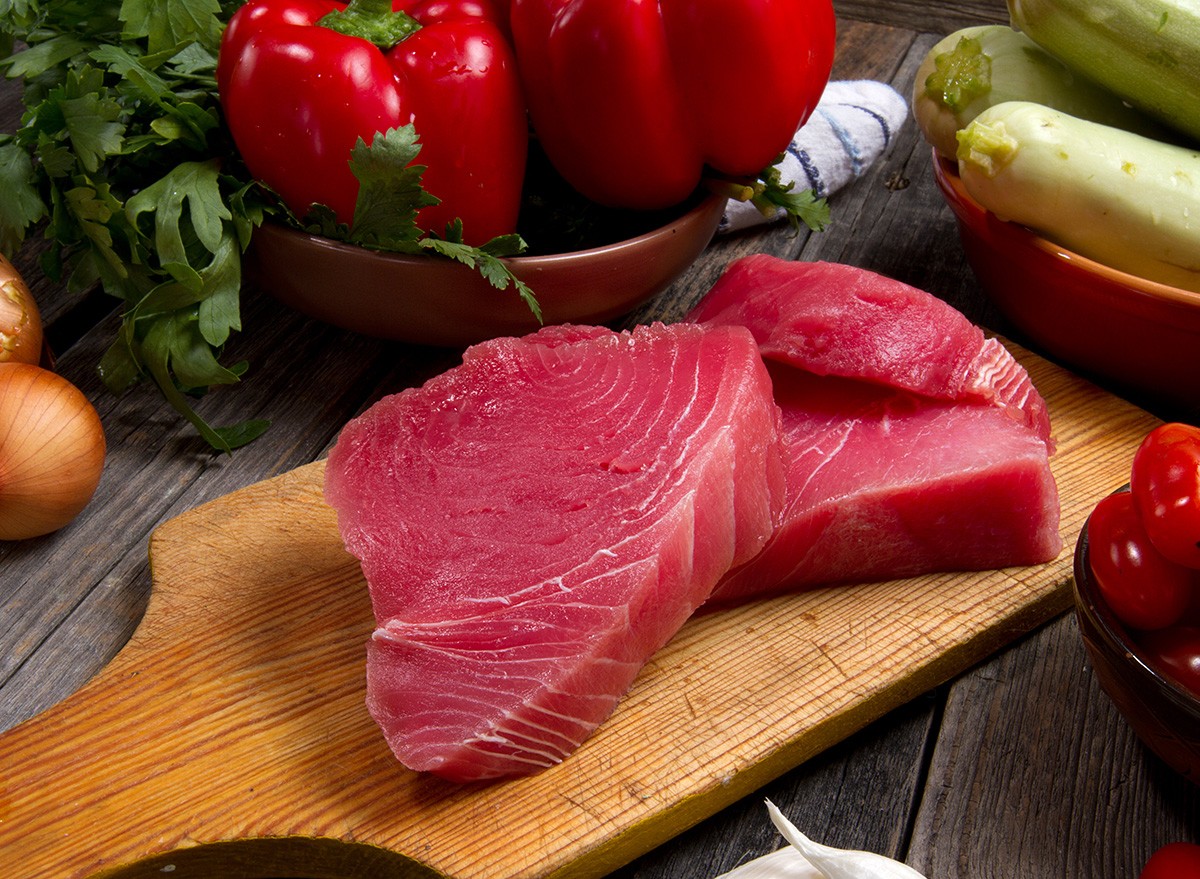
Kait lists tuna among the seafood options that "all contain zero carbohydrates." This widely available fish provides lean protein with virtually no fat, making it one of the most protein-dense foods you can eat. According to Mayo Clinic, tuna provides significant amounts of selenium and vitamin D. Canned varieties offer convenience and long shelf life, while fresh tuna steaks provide a meaty texture perfect for grilling. Either way, tuna delivers substantial nutrition while keeping your carb count at zero.
Shrimp
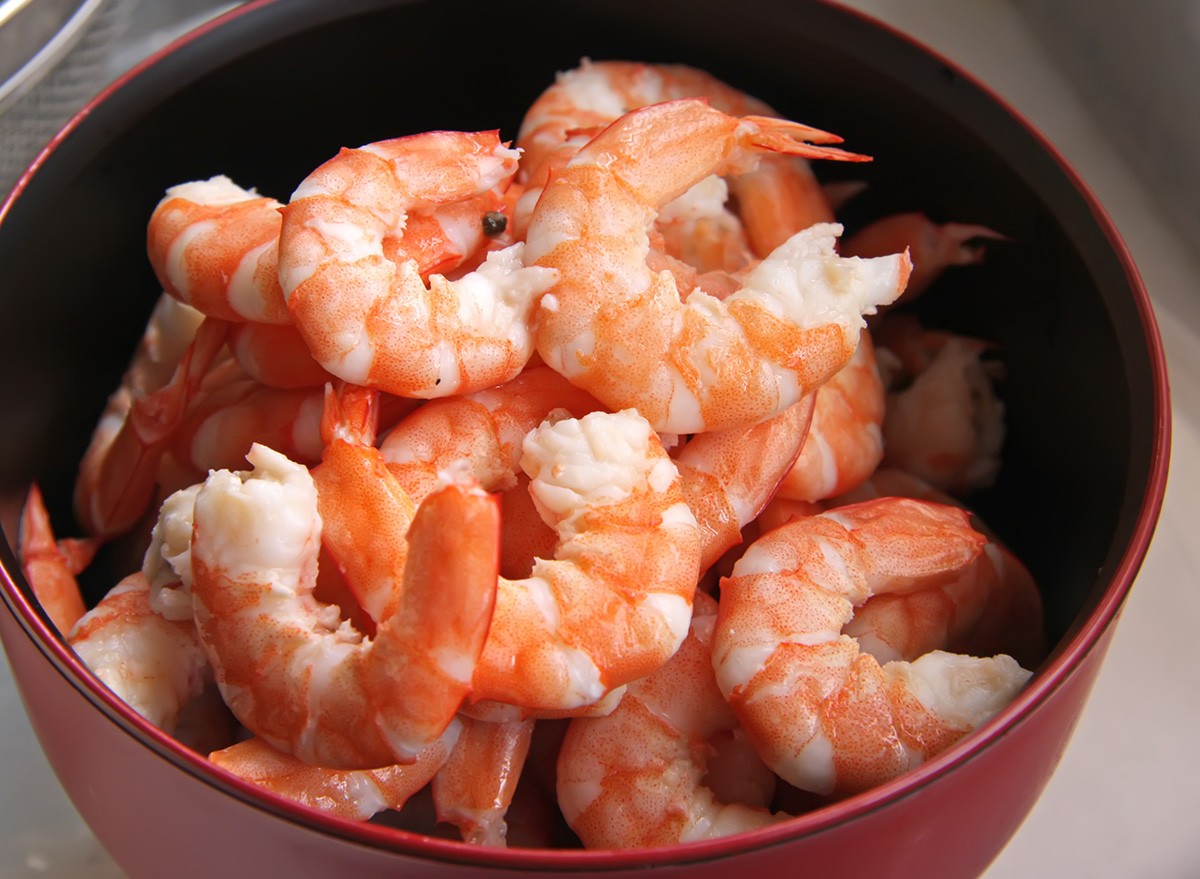
Shrimp appears on Kait's list of seafood that "all contain zero carbohydrates." These versatile shellfish are not only carb-free but also extremely low in fat while providing high-quality protein. The Cleveland Clinic highlights that shrimp contain astaxanthin, a carotenoid with antioxidant properties that may support brain and nervous system health. Though once controversial for their cholesterol content, research published in the Journal of the American College of Nutrition suggests that shrimp consumption doesn't negatively impact heart disease risk factors.
RELATED: 20 Foods You Didn't Know Were Ultra-Processed
American Cheese
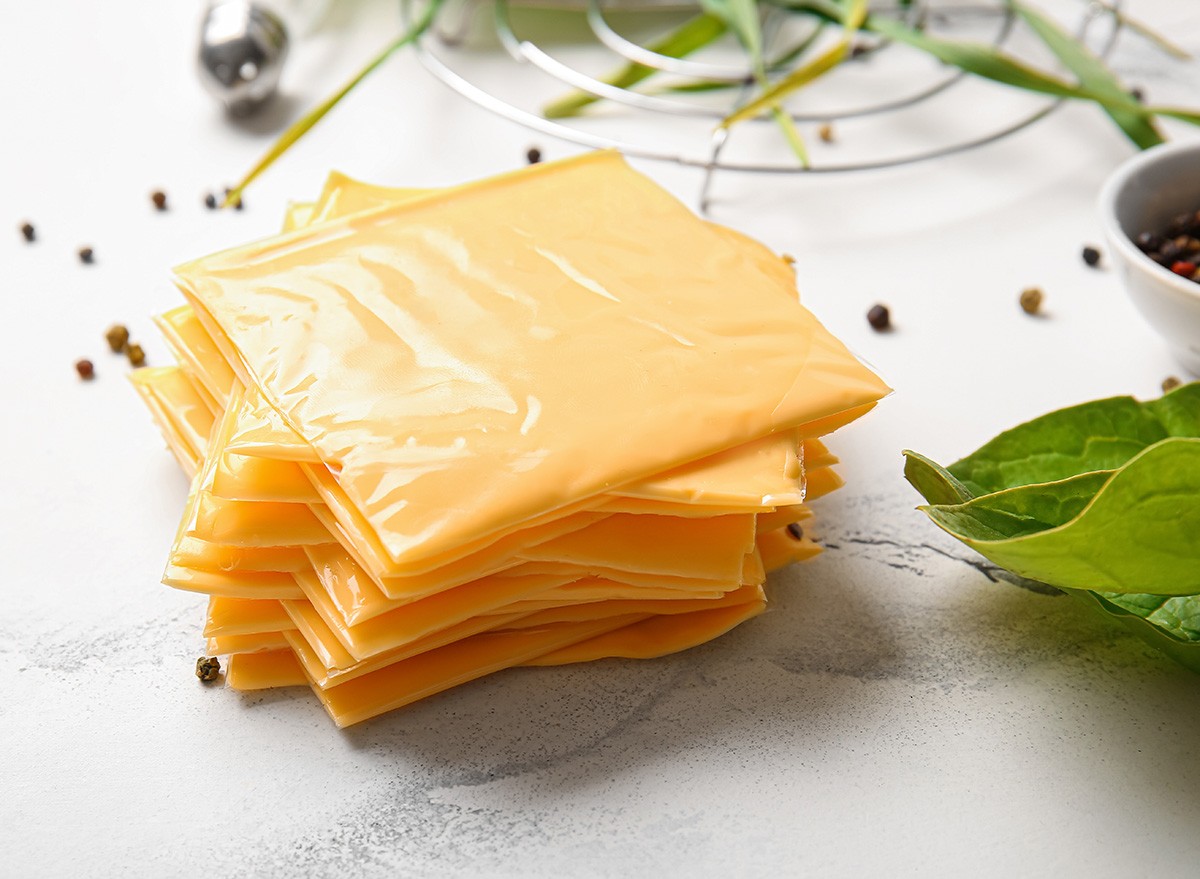
Kait notes that "Most cheeses are only going to have trace amounts of carbohydrates with less than one gram total carbs per serve," and includes American cheese in her zero-carb list. While processed, American cheese still provides calcium and protein without significant carbs. The National Dairy Council explains that the meltability of American cheese comes from its emulsifiers, making it perfect for keto-friendly burgers or omelets. For the most nutritional value, look for varieties with the shortest ingredient lists and minimal additives.
Blue Cheese
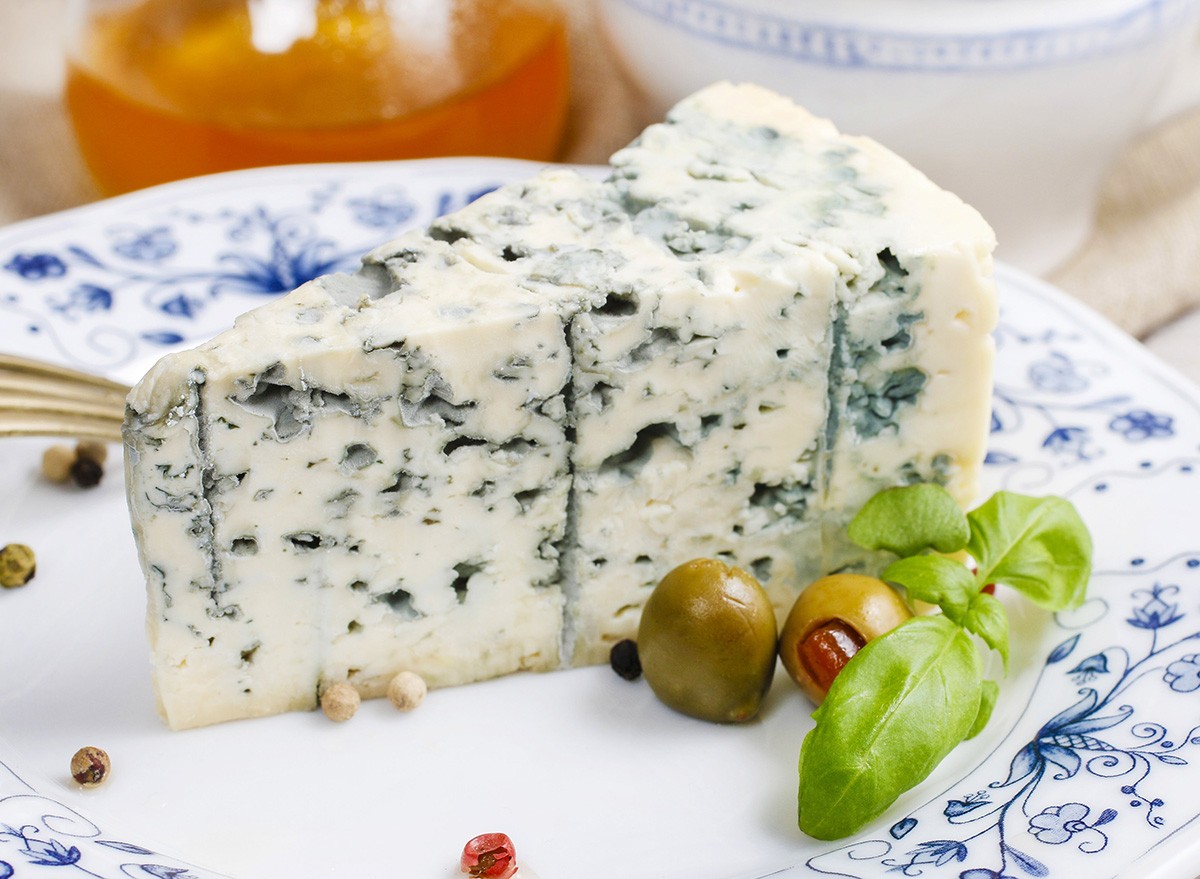
Blue cheese appears on Kait's list of zero-carb cheeses. This distinctive, boldly flavored cheese offers more than just zero carbs – it also provides beneficial compounds from its unique mold cultures. Research published in the Journal of Agricultural and Food Chemistry found that blue cheese contains compounds that may have anti-inflammatory properties. The strong flavor means a little goes a long way, helping you add richness to salads, steaks, or vegetable dishes without adding carbs to your daily count.
Parmesan
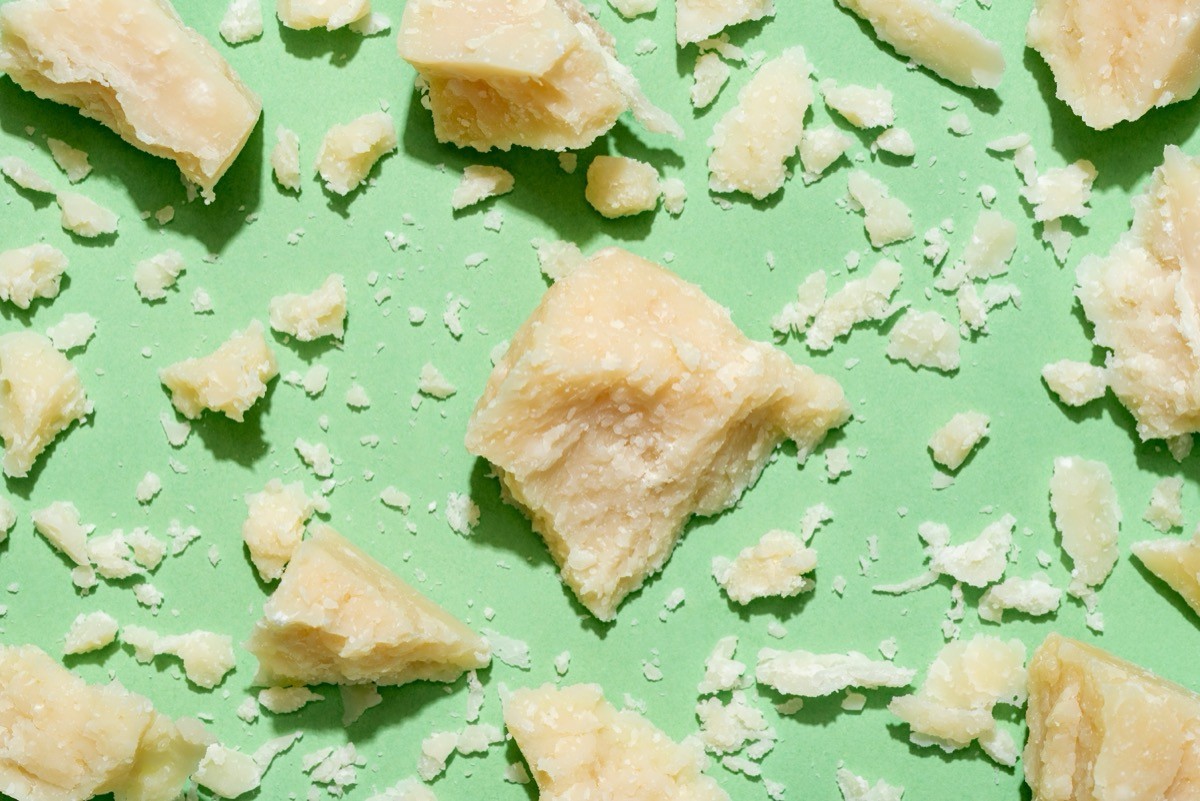
Parmesan makes Kait's list of zero-carb cheeses. This hard, aged cheese provides significant protein along with calcium and phosphorus, which work together to support bone health. According to Harvard Health, aged cheeses like parmesan contain minimal lactose, making them suitable for those with lactose sensitivity. Parmesan's concentrated flavor means small amounts can enhance dishes without adding carbs, and its long shelf life makes it a practical staple for low-carb kitchens.
Feta
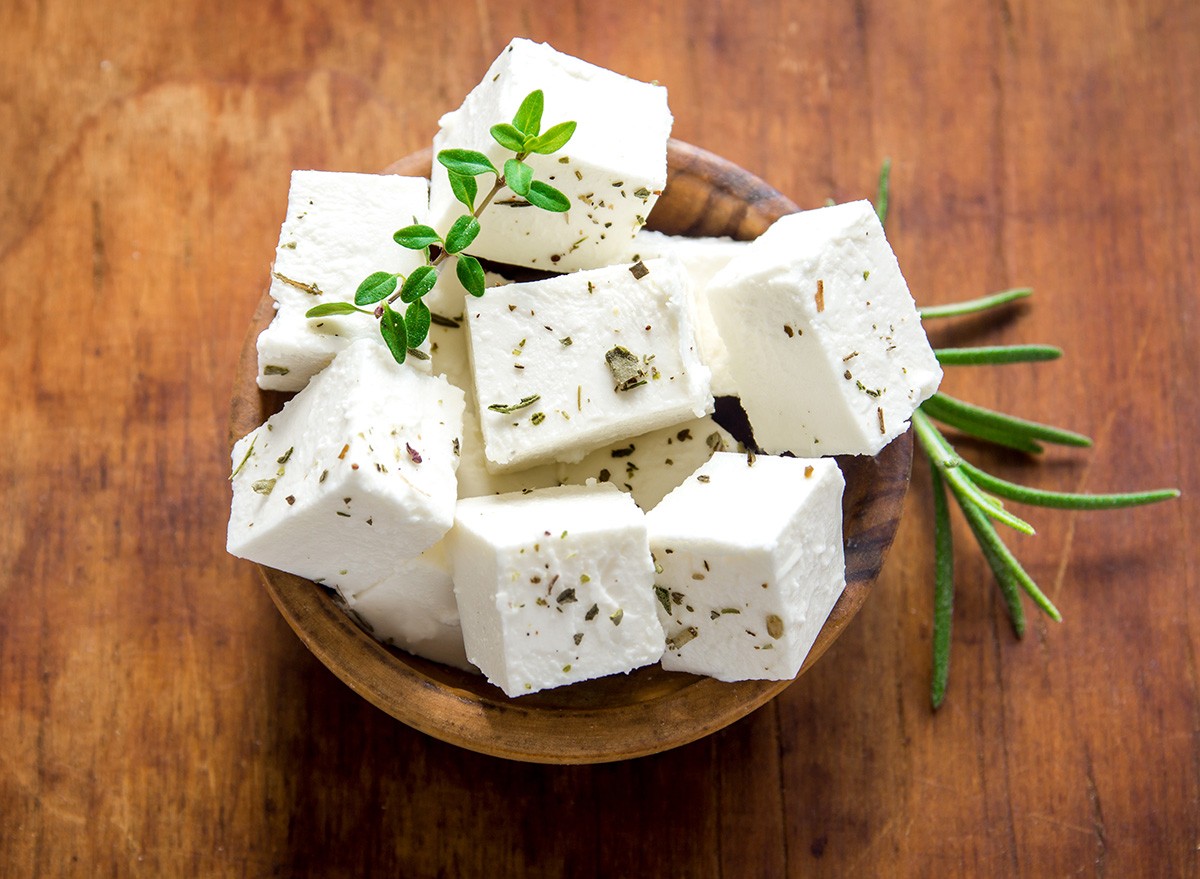
Feta appears on Kait's list of zero-carb cheeses. This tangy Greek cheese provides beneficial probiotics due to its fermentation process, according to research published in the Journal of Dairy Science. Feta contains less fat than many other cheeses while providing calcium, phosphorus, and protein. Made traditionally from sheep's milk or a combination of sheep and goat milk, feta offers distinctive flavor for zero carbs, making it an excellent addition to salads, egg dishes, and more on a ketogenic diet.
Cheddar
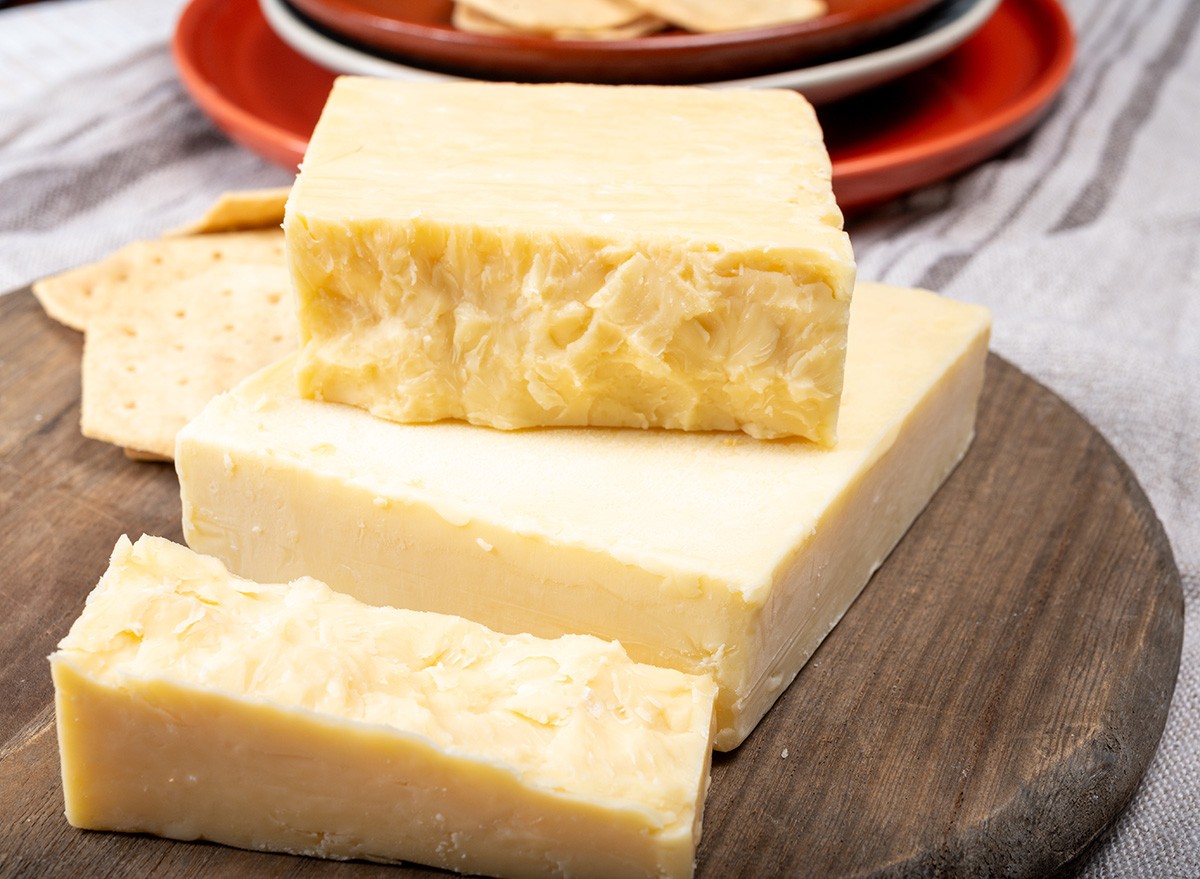
Cheddar is included in Kait's zero-carb cheese list. This versatile cheese provides substantial amounts of vitamin K2, which plays an important role in bone and cardiovascular health, according to research published in the Journal of Nutrition. The aging process of cheddar reduces its lactose content to negligible levels, making it both zero-carb and more digestible for those with mild lactose intolerance. From mild to extra-sharp varieties, cheddar offers flavor options while maintaining its zero-carb status.
RELATED: I'm a Nutritionist and These are the Best Banana Recipes For Weight Loss
Chicken Eggs
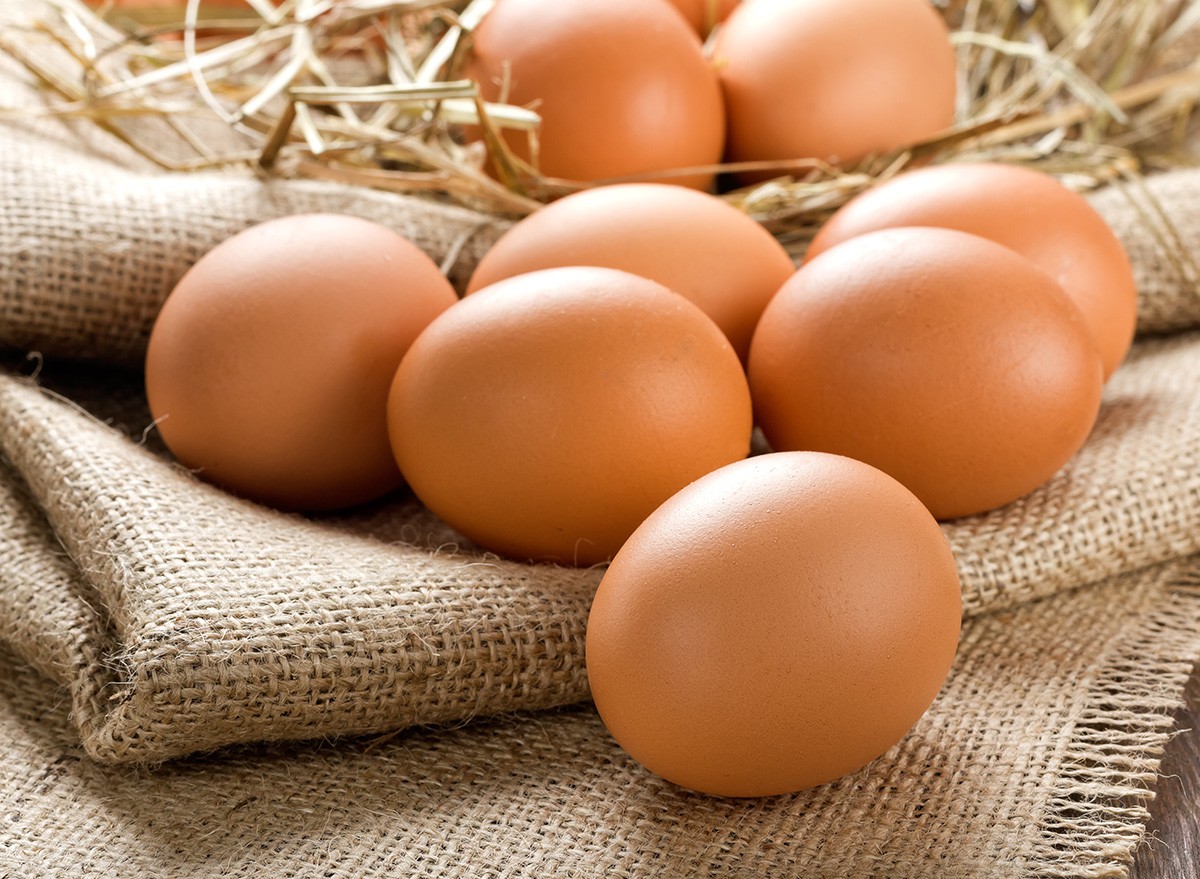
Kait includes "Chicken eggs, duck eggs, fish eggs, also known as roe" in her list of zero-carb animal products. Chicken eggs provide complete protein containing all essential amino acids in the ideal ratios for human nutrition. According to the Harvard T.H. Chan School of Public Health, eggs also provide choline, a nutrient crucial for brain health and often lacking in the average diet. With less than 1g of carbohydrate per egg, they're practically carb-free while offering versatility in cooking methods from boiling to frying to baking.
Duck Eggs

Duck eggs appear on Kait's list of zero-carb animal products. Larger than chicken eggs, duck eggs provide more protein, fat, and nutrients per egg. According to USDA data, duck eggs contain more omega-3 fatty acids than chicken eggs. Their higher fat content and extra-large, rich yolks make them particularly valuable for baking on a keto diet, where they can provide stability and richness without the need for carb-heavy ingredients. The minimal carb content makes them suitable for even the strictest low-carb approaches.
Fish Eggs (Roe)
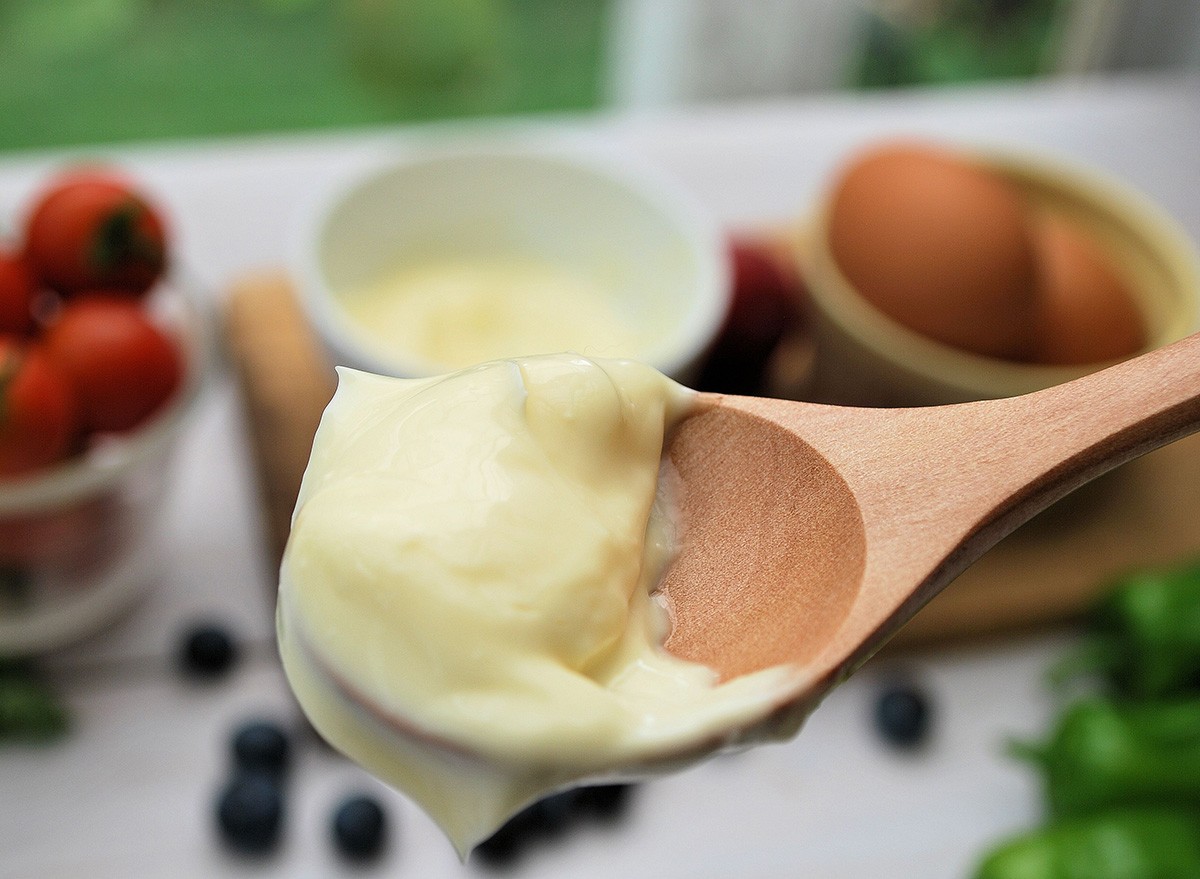
Kait includes "fish eggs, also known as roe" on her zero-carb animal products list. This delicacy isn't just luxurious – it's also nutritionally dense. According to the National Institutes of Health, fish roe provides exceptional amounts of omega-3 fatty acids and vitamin D. It also contains unique phospholipids that support brain health. Whether enjoying caviar, salmon roe, or tobiko, you're getting substantial nutrition with virtually no carbohydrates, making fish eggs a nutrient-dense option for special occasions on a ketogenic diet.
Beef Bone Broth
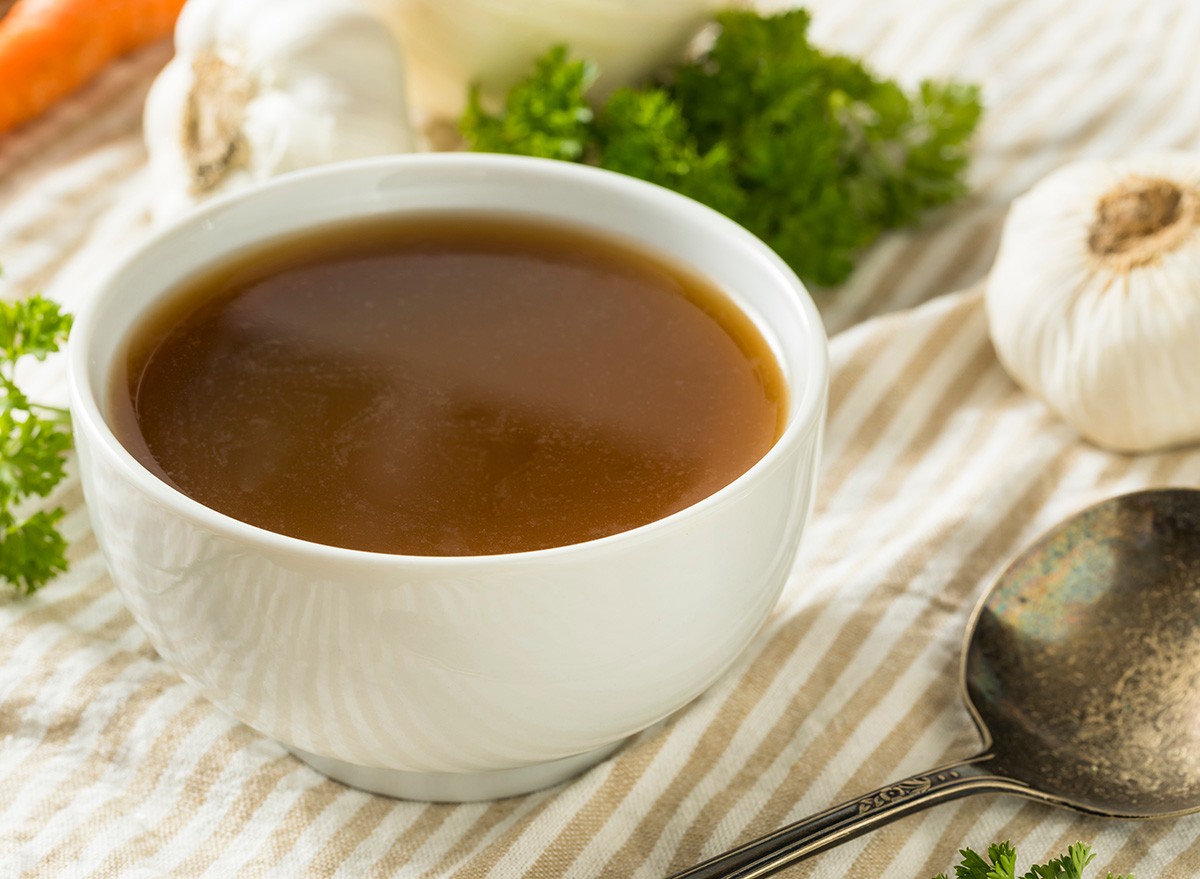
Kait lists "beef bone broth, chicken bone broth, fish bone broth" among zero-carb animal products. Beef bone broth provides collagen, which breaks down into gelatin during the cooking process. According to Harvard Health, collagen proteins may support joint health and gut integrity. The nutrients extracted during the long simmering process include minerals like calcium, magnesium, and phosphorus in forms easily absorbed by the body. With no carbs and a satisfying umami flavor, beef bone broth makes an excellent base for low-carb soups or a warming beverage.
RELATED: What Happens When You Quit Soda, According to a Nutritionist
Chicken Bone Broth
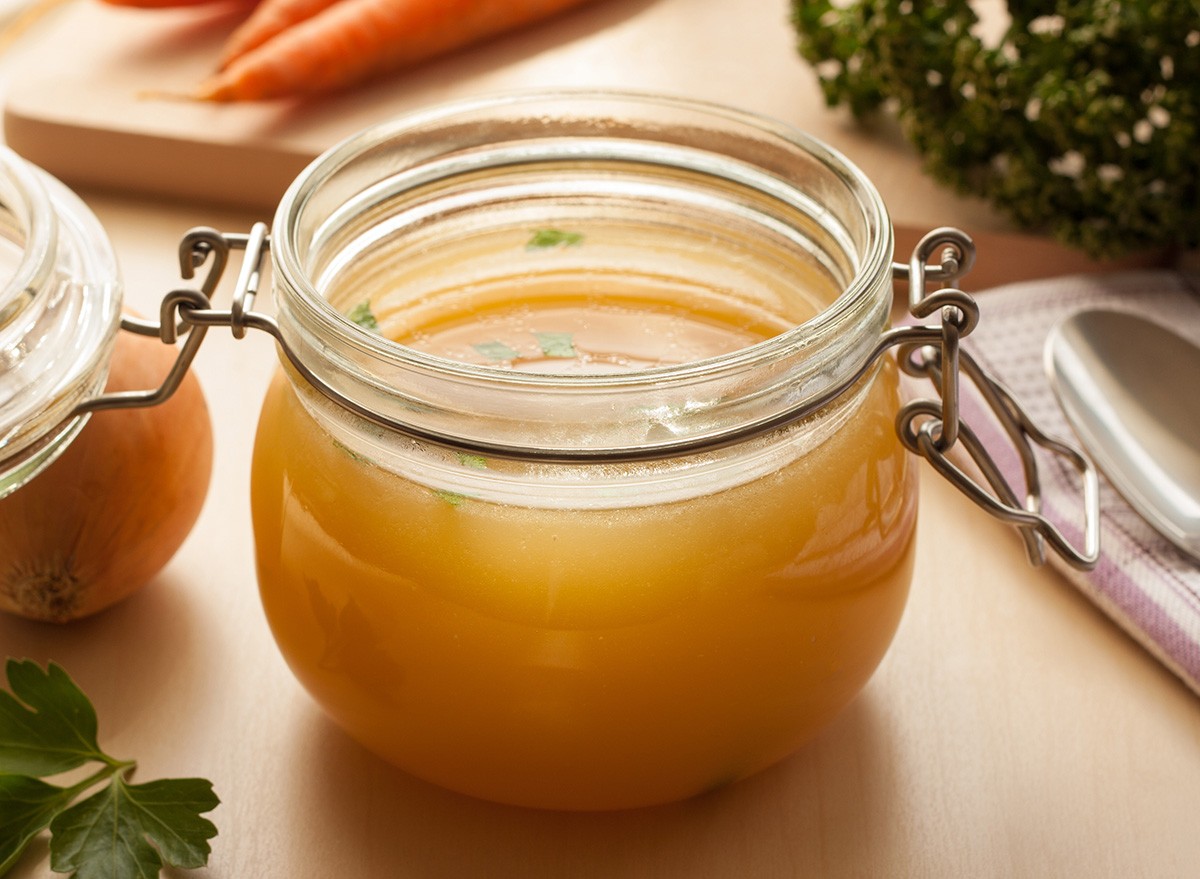
Chicken bone broth appears on Kait's list of zero-carb animal products. This traditional food provides glycine, an amino acid that supports detoxification pathways and may improve sleep quality, according to research published in the journal Nutrients. The Cleveland Clinic notes that the gentle simmering of bones extracts minerals in forms that are easily absorbed by the body. Chicken bone broth offers lighter flavor than beef varieties while maintaining zero carbohydrates, making it versatile for cooking or sipping throughout your keto journey.
Butter
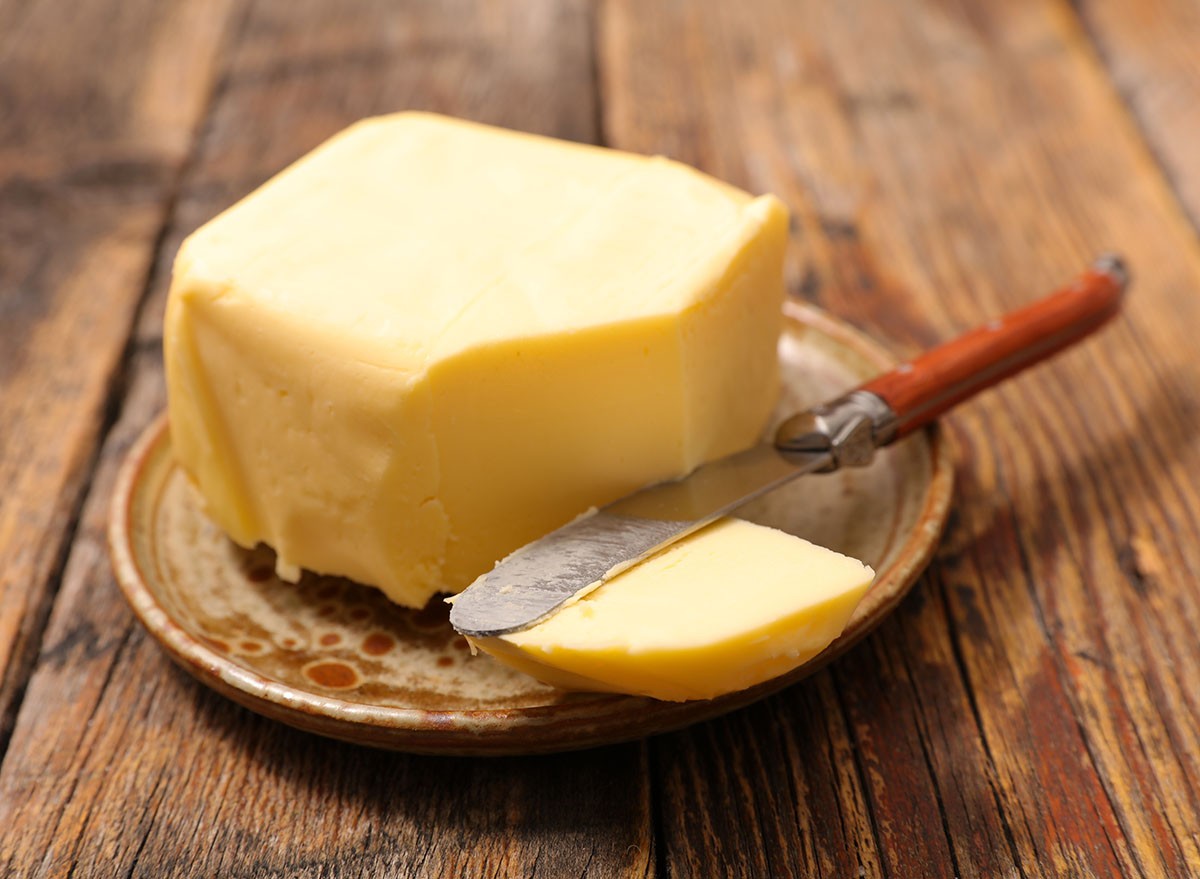
Kait lists "Butter, ghee, beef tallow, coconut oil, avocado oil, olive oil, MCT oil, flaxseed oil, cod liver oil, palm oil, duck fat, chicken fat, and bacon grease" as zero-carb fats and oils. Butter contains butyrate, a short-chain fatty acid that may support gut health, according to research published in the World Journal of Gastroenterology. The Cleveland Clinic notes that butter also provides fat-soluble vitamins A, D, E, and K2, particularly when sourced from grass-fed cows. With no carbohydrates, butter adds richness and flavor to vegetables and proteins on a ketogenic diet.
Ghee
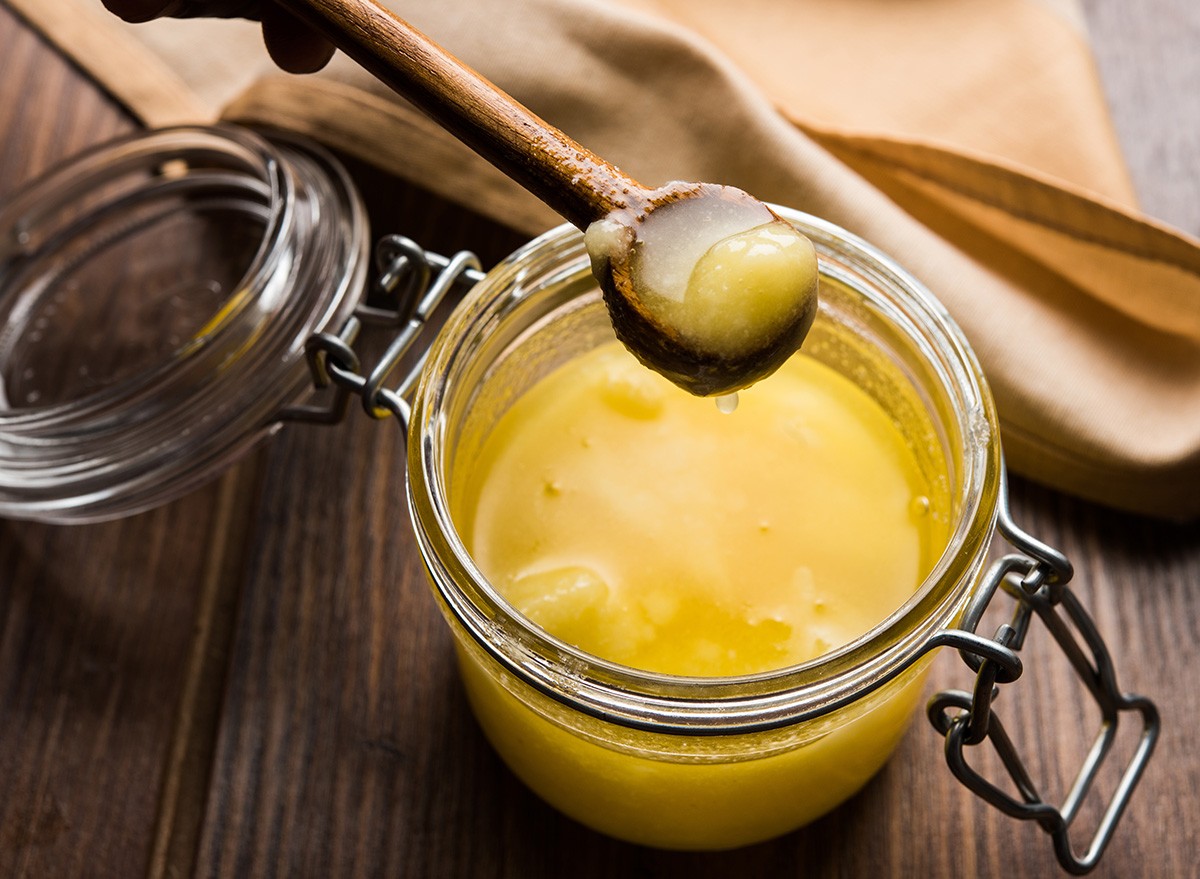
Ghee makes Kait's list of zero-carb fats and oils. This clarified butter has had milk solids removed, making it virtually lactose-free and suitable for many who can't tolerate regular dairy. According to Ayurvedic tradition and supported by research in the Journal of Clinical and Diagnostic Research, ghee may support digestion and absorption of fat-soluble nutrients. With a higher smoke point than butter, ghee works well for high-heat cooking while maintaining zero carbohydrates, making it a versatile fat source for ketogenic cooking.
Beef Tallow
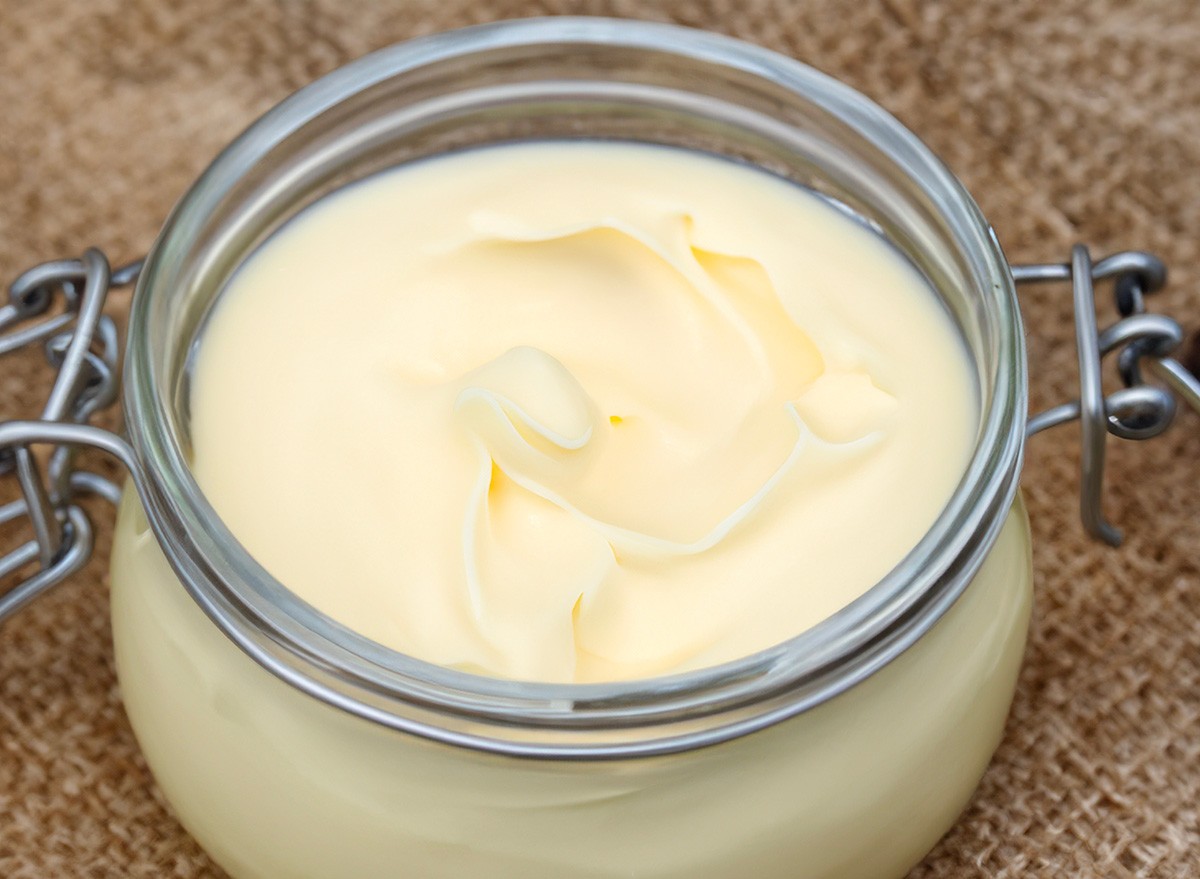
Beef tallow appears on Kait's list of zero-carb fats and oils. This traditional cooking fat provides a stable option for high-heat cooking due to its high smoke point and predominance of saturated fats, which resist oxidation. Research from the USDA indicates that tallow from grass-fed cattle contains conjugated linoleic acid (CLA), which may have anti-inflammatory properties. With absolutely no carbohydrates and a neutral flavor that won't overpower your food, beef tallow makes an excellent choice for frying or roasting on a ketogenic diet.
Coconut Oil
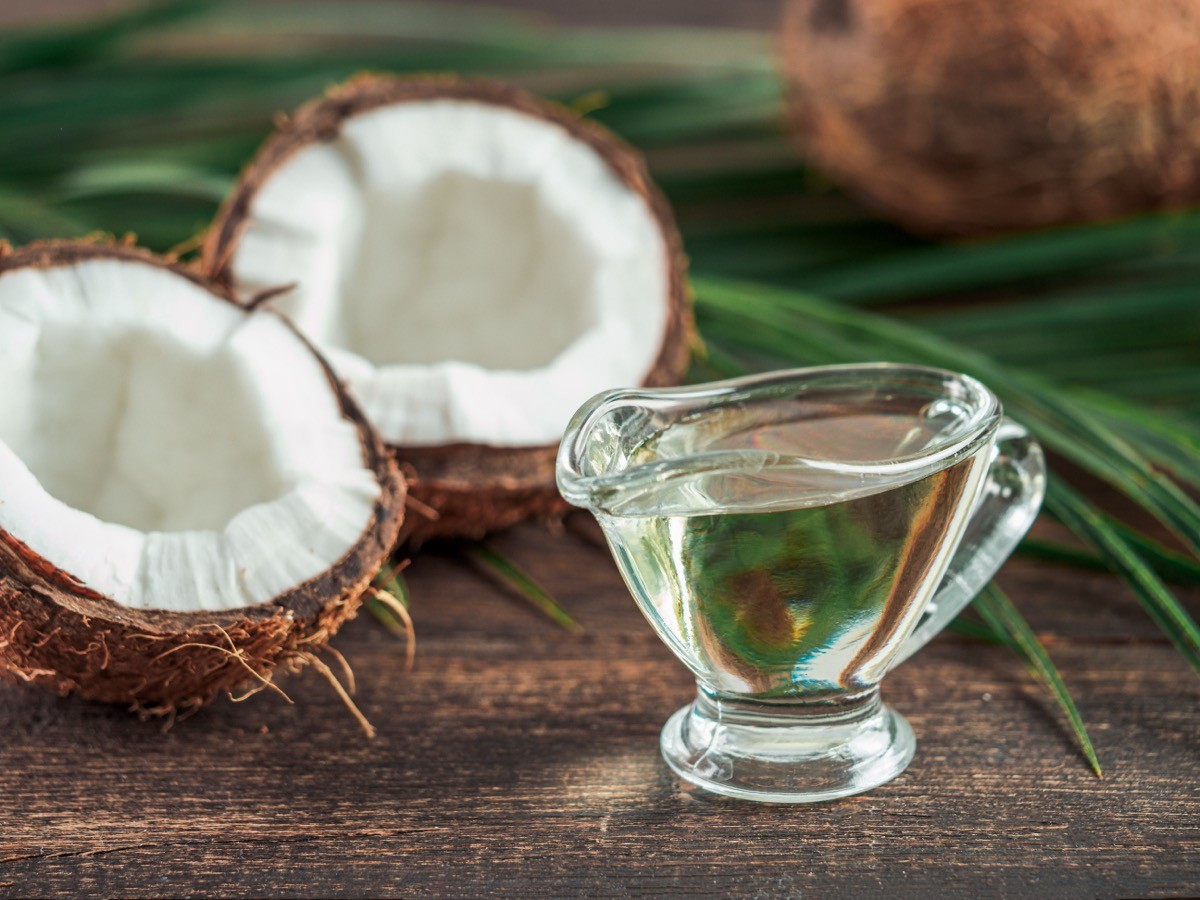
Coconut oil is included in Kait's zero-carb fats and oils list. This tropical oil contains medium-chain triglycerides (MCTs) that are metabolized differently than longer-chain fats. According to the Harvard T.H. Chan School of Public Health, MCTs go directly to the liver where they can be converted to ketones, potentially supporting ketosis. The mild coconut flavor works well in both sweet and savory dishes, while the complete absence of carbohydrates makes it suitable for even the strictest ketogenic approach.
RELATED: 15 Things to Know Before Requesting Ozempic for Weight Loss
Avocado Oil
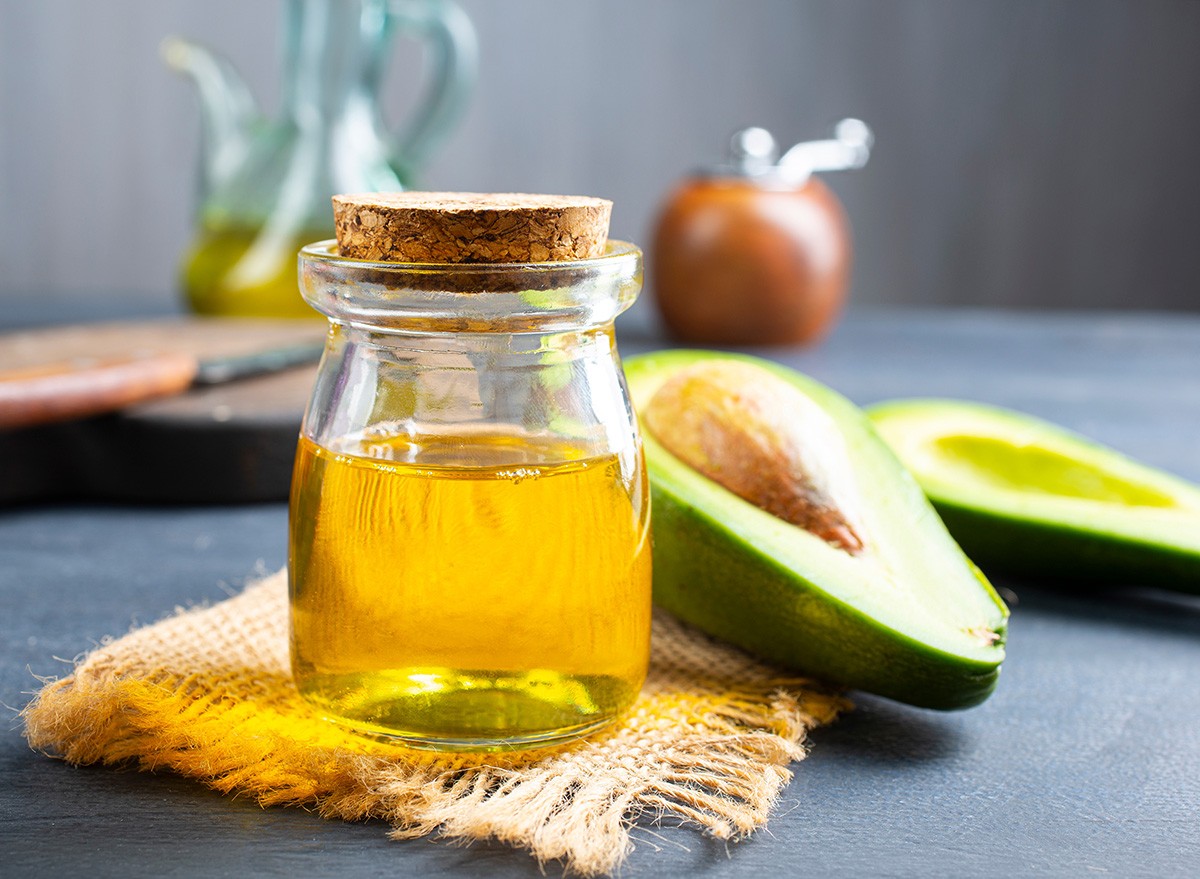
Avocado oil appears on Kait's list of zero-carb fats and oils. This heart-healthy oil is high in monounsaturated fats, particularly oleic acid, which research published in the American Journal of Clinical Nutrition suggests may help reduce inflammation. With one of the highest smoke points of any cooking oil (about 520°F), avocado oil is ideal for high-heat cooking methods. Mayo Clinic notes that it also provides vitamin E, an antioxidant that supports skin and immune health. With zero carbs, it's perfect for ketogenic cooking.
Mayonnaise

Kait explains that "sauces will vary greatly depending on the brand. Most generic brands have added sugar and other ingredients you want to stay away from, but if you can find the following sauces with no added sugar from brands such as Primal Kitchen and Undivided Food Co., they will probably be less than one gram total carbs per serve." She includes mayonnaise on this list. Made primarily from eggs and oil, traditional mayonnaise contains minimal carbohydrates. Look for versions made with healthy oils like avocado oil rather than inflammatory seed oils for optimal nutrition on a ketogenic diet.
Sour Cream
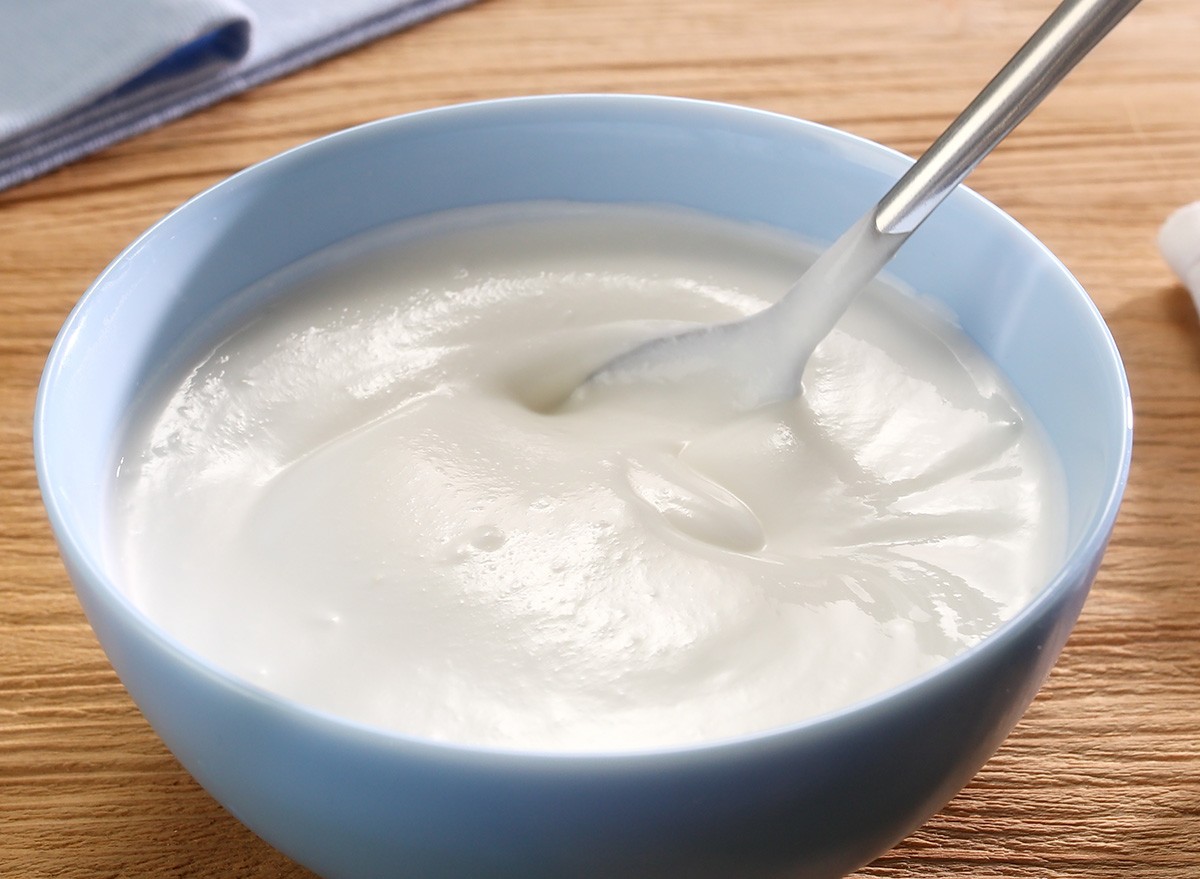
Sour cream appears on Kait's list of potentially zero-carb sauces. This fermented dairy product provides probiotics that support gut health, according to research published in the Journal of Dairy Science. While commercial varieties may contain stabilizers that add trace carbs, most sour cream contains less than 1g carbohydrate per serving, making it practically zero-carb. The Cleveland Clinic notes that fermented dairy products like sour cream may be easier to digest than fresh dairy for those with mild lactose sensitivity, making it a versatile condiment for your low-carb lifestyle.
Bok Choy
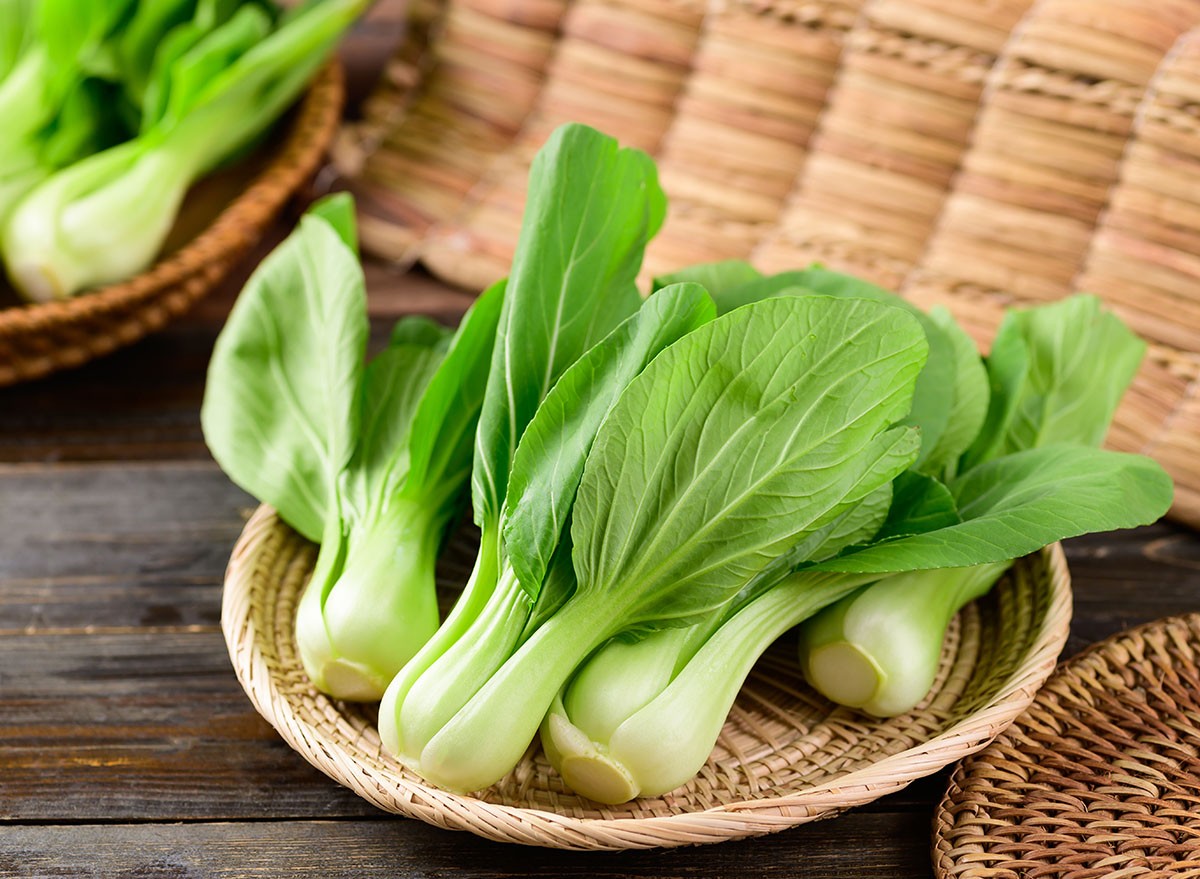
Kait explains, "It is impossible for any vegetable, or fruit for that matter, to truly be zero carb. However, the following vegetables have less than one gram total carbs per serve." She includes bok choy on this list. This Asian vegetable provides substantial vitamin K, which supports bone health and proper blood clotting, according to the National Institutes of Health. Bok choy also offers antioxidant compounds while keeping carbs minimal, making it an excellent addition to stir-fries or as a side dish on a ketogenic diet.
Arugula
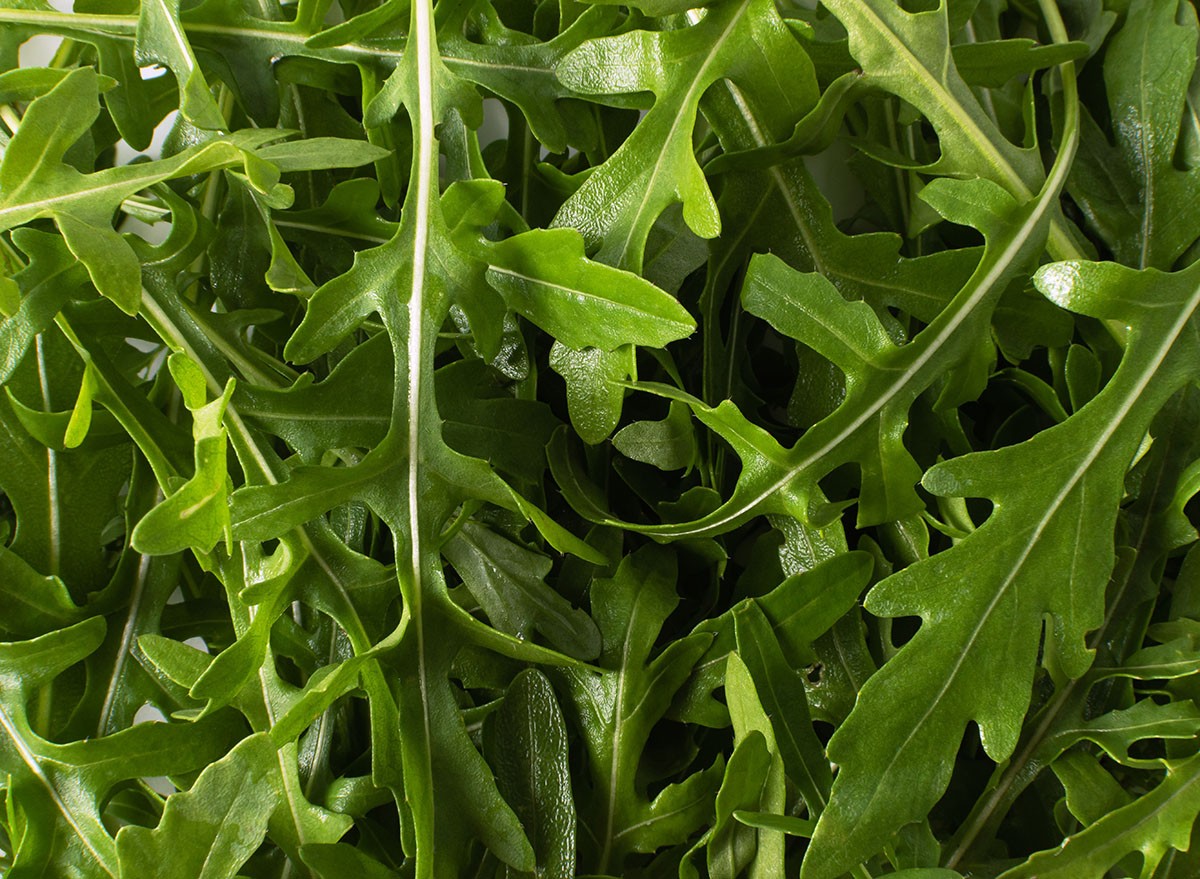
Arugula appears on Kait's list of vegetables with "less than one gram total carbs per serve." This peppery green provides nitrates that may support cardiovascular health by improving blood flow, according to research published in the Journal of Nutrition. Harvard Health highlights arugula as an excellent source of vitamin K and folate. With its distinctive flavor and minimal carbohydrate impact, arugula makes salads more interesting without compromising ketosis, making it a smart choice for adding variety to your low-carb meal plan.
RELATED: 20 Superfoods for People Over 50
Iceberg Lettuce
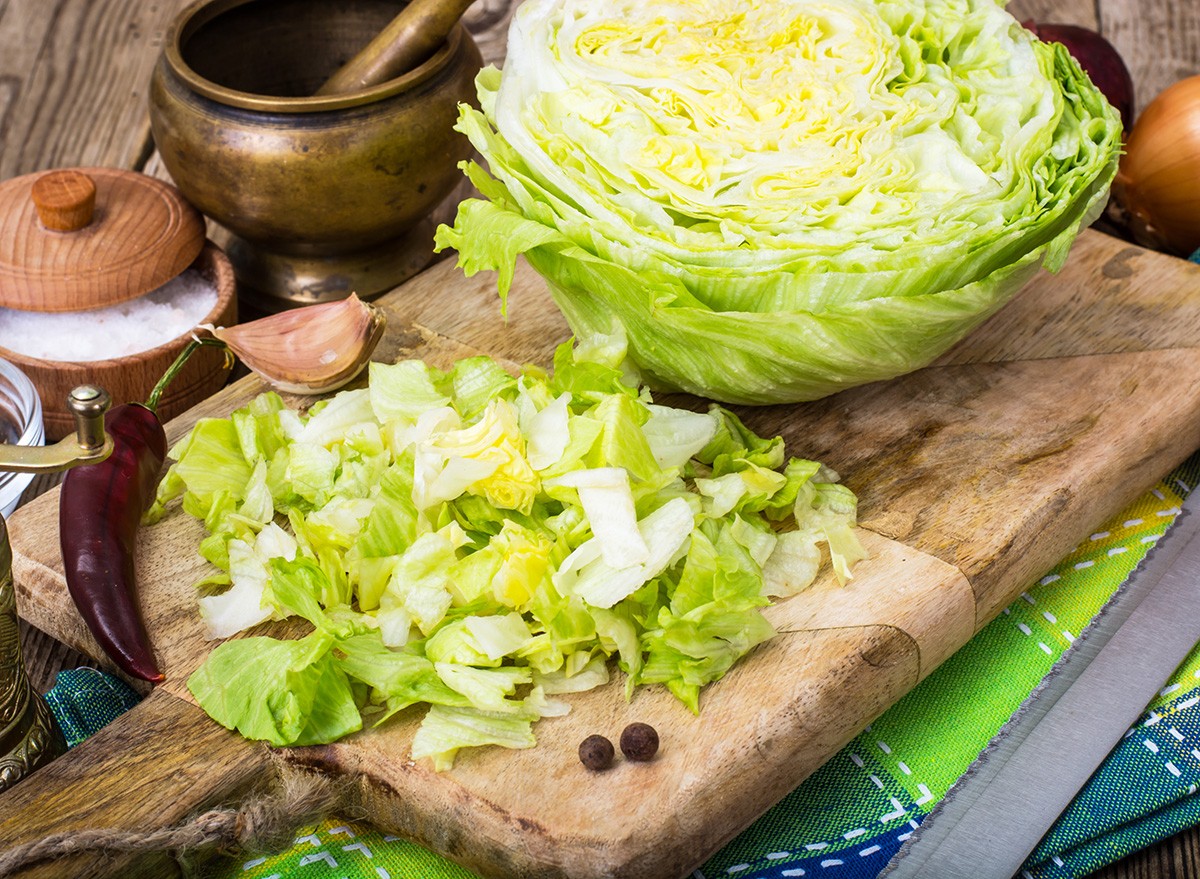
Iceberg lettuce makes Kait's list of vegetables with "less than one gram total carbs per serve." While often dismissed as nutritionally empty, iceberg lettuce actually provides hydration, fiber, and small amounts of vitamins A and K, according to the USDA. Its high water content (96%) and crisp texture make it perfect for lettuce wraps as bread alternatives on a ketogenic diet. With virtually no carbohydrate impact, iceberg lettuce offers volume and crunch to meals without affecting blood sugar or ketosis.
Asparagus

When discussing vegetables with slightly higher but still low carb counts, Kait includes "Asparagus, broccoli, cabbage, cauliflower, celery, cucumber, eggplant, green bell pepper, mushrooms, and zucchini" as having under five grams of total carbohydrates. Asparagus provides inulin, a prebiotic fiber that supports gut health, according to research published in the British Journal of Nutrition. The Cleveland Clinic notes that asparagus also contains asparagine, a compound that acts as a natural diuretic, potentially helping reduce water retention. With low carb impact, asparagus makes an elegant side dish for keto meals.
Olives
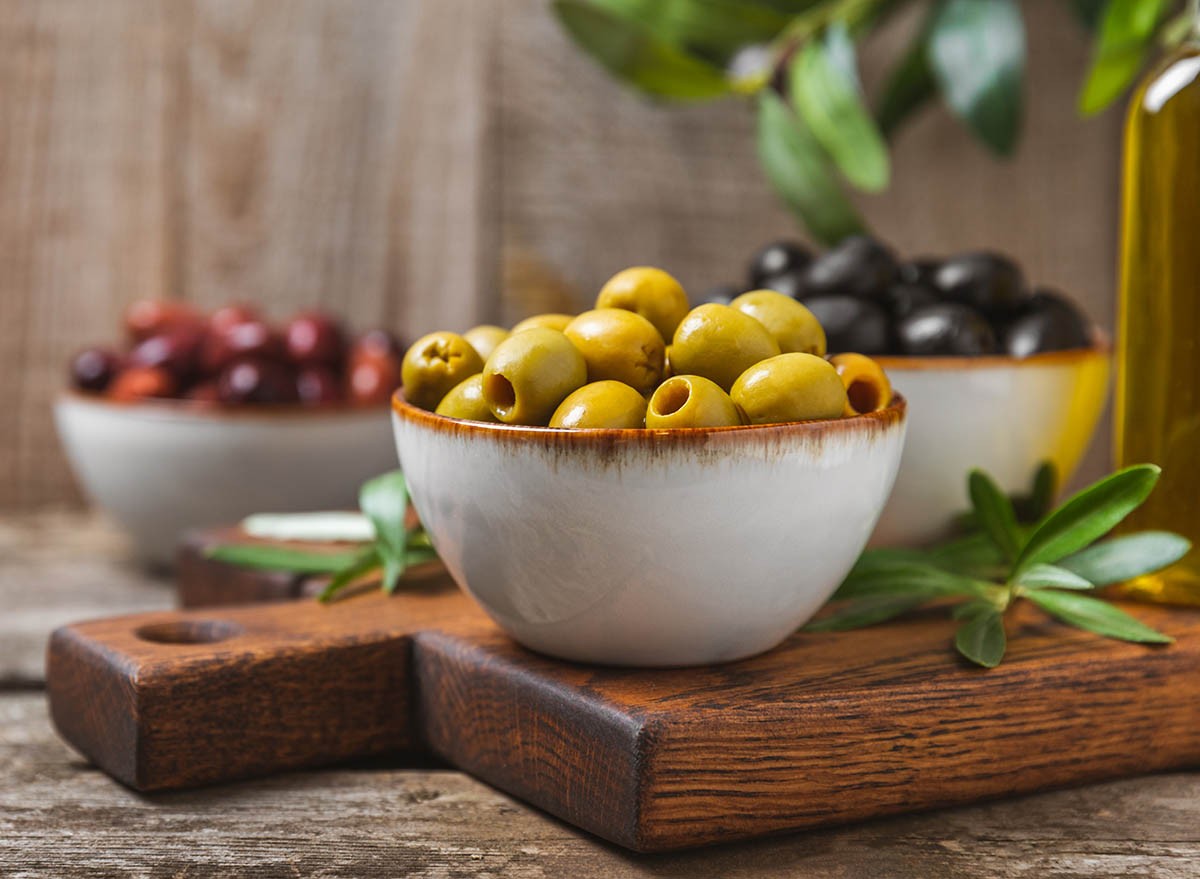
In the fruit category, Kait lists "Olives and coconut flakes" as containing less than five grams of total carbohydrates. These savory fruits provide heart-healthy monounsaturated fats, primarily oleic acid. According to research published in the journal Nutrients, olives contain polyphenols that may have anti-inflammatory and antioxidant effects. Mayo Clinic highlights that the Mediterranean diet, which features olives prominently, is associated with heart health benefits. With minimal carbs and maximum flavor, olives make perfect keto-friendly snacks or recipe ingredients.
Macadamia Nuts
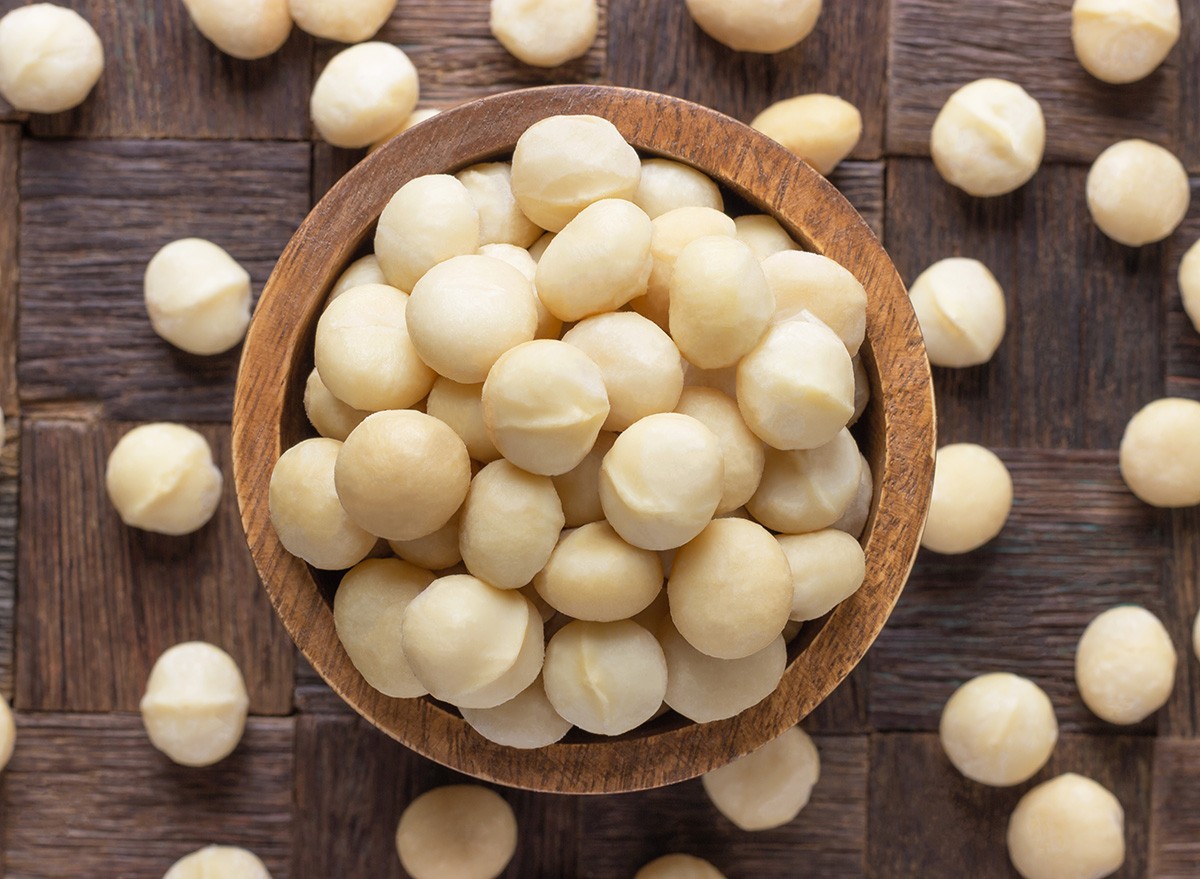
Kait lists "Macadamia nuts, almonds, Brazil nuts, hazelnuts, hemp seeds, walnuts, sesame seeds, pecans, peanuts, chia seeds" among nuts and seeds with less than five grams of total carbs. Macadamias have the highest fat content of any nut, with over 75% coming from monounsaturated fats. According to the Journal of Nutrition, their favorable omega-3 to omega-6 ratio may support cardiovascular health. With only about 4 grams of carbs per ounce and substantial manganese content, macadamias offer luxurious texture and flavor for keto snacking or recipes.
Almonds
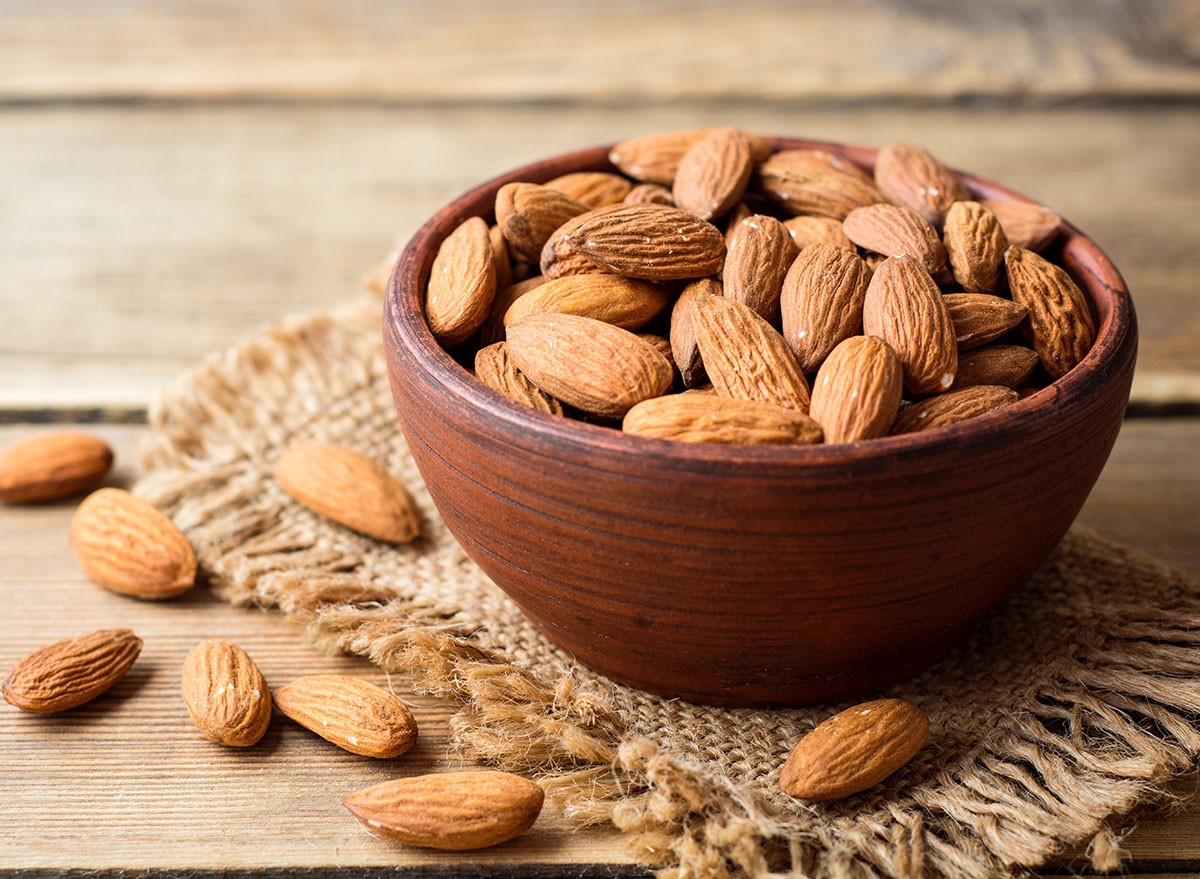
Almonds appear on Kait's list of nuts with less than five grams of total carbs. These versatile nuts provide vitamin E, magnesium, and fiber while keeping carbs relatively low. According to research published in the Journal of the American Heart Association, regular almond consumption may help improve cholesterol profiles. Harvard Health notes that almonds provide L-arginine, an amino acid that supports healthy blood vessel function. With approximately 3g net carbs per ounce, almonds offer nutrition and versatility while fitting into ketogenic macronutrient targets.
Cottage Cheese
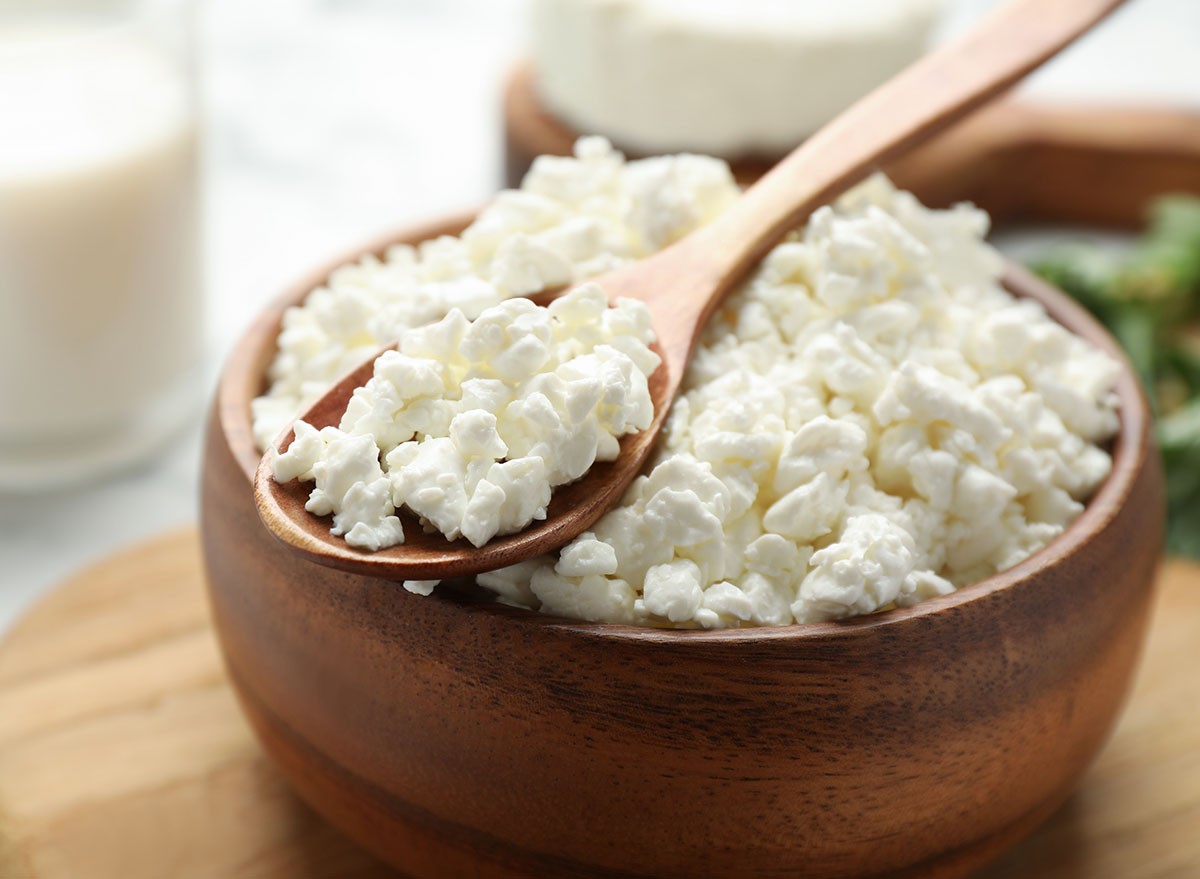
When discussing dairy beyond zero-carb options, Kait mentions "Cottage cheese, ricotta, and heavy cream" as having slightly higher carbs but still suitable for low-carb diets. Cottage cheese provides casein protein, which digests slowly and may support muscle maintenance during overnight fasting, according to research in the British Journal of Nutrition. The Cleveland Clinic highlights cottage cheese as a good source of selenium, which supports thyroid function. With approximately 3-4g carbs per half-cup, cottage cheese can fit into even strict ketogenic diets when portioned appropriately. And if you enjoyed this article, take advantage of these 15 Quick Ways to Lose Body Fat Percentage in a Week.




